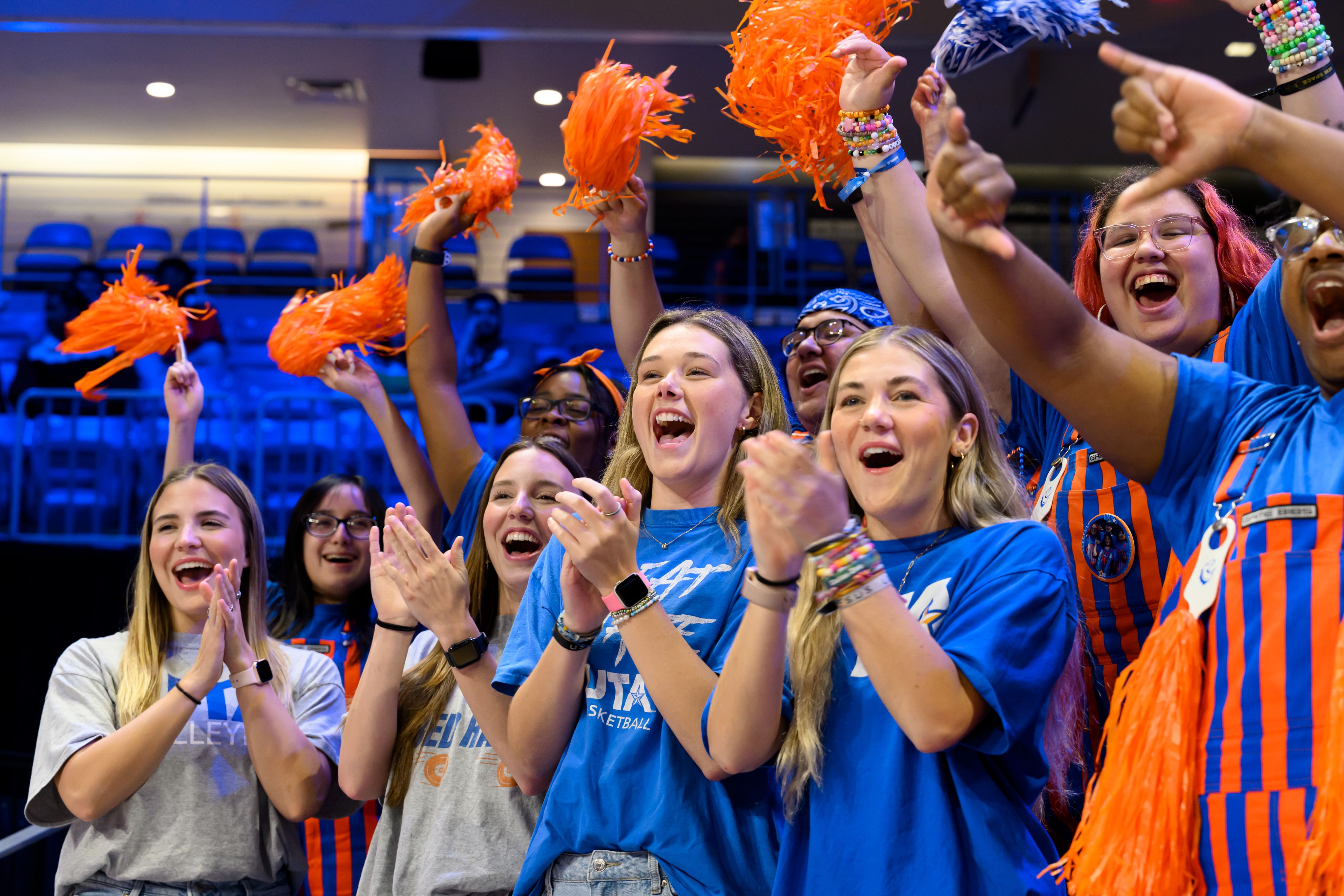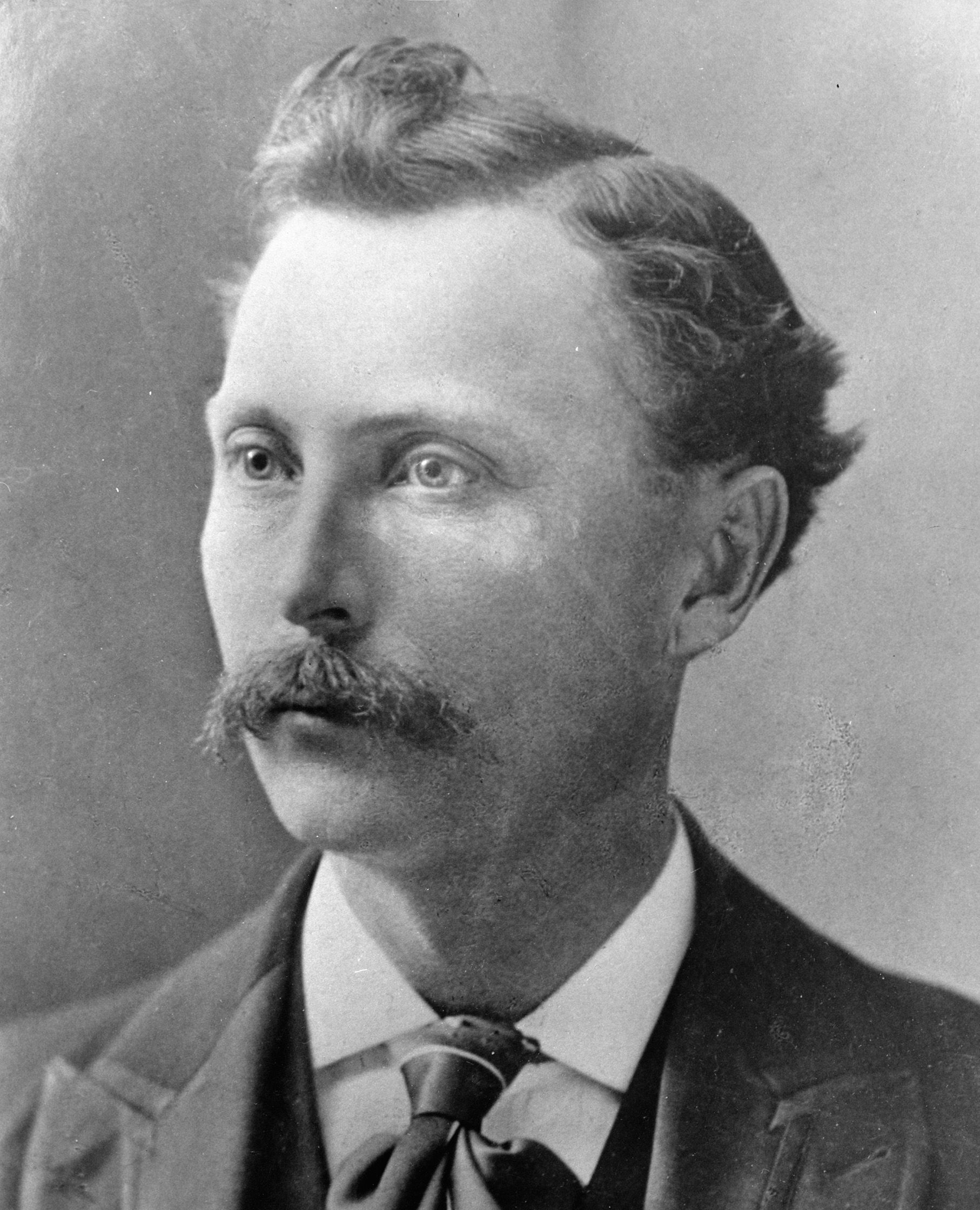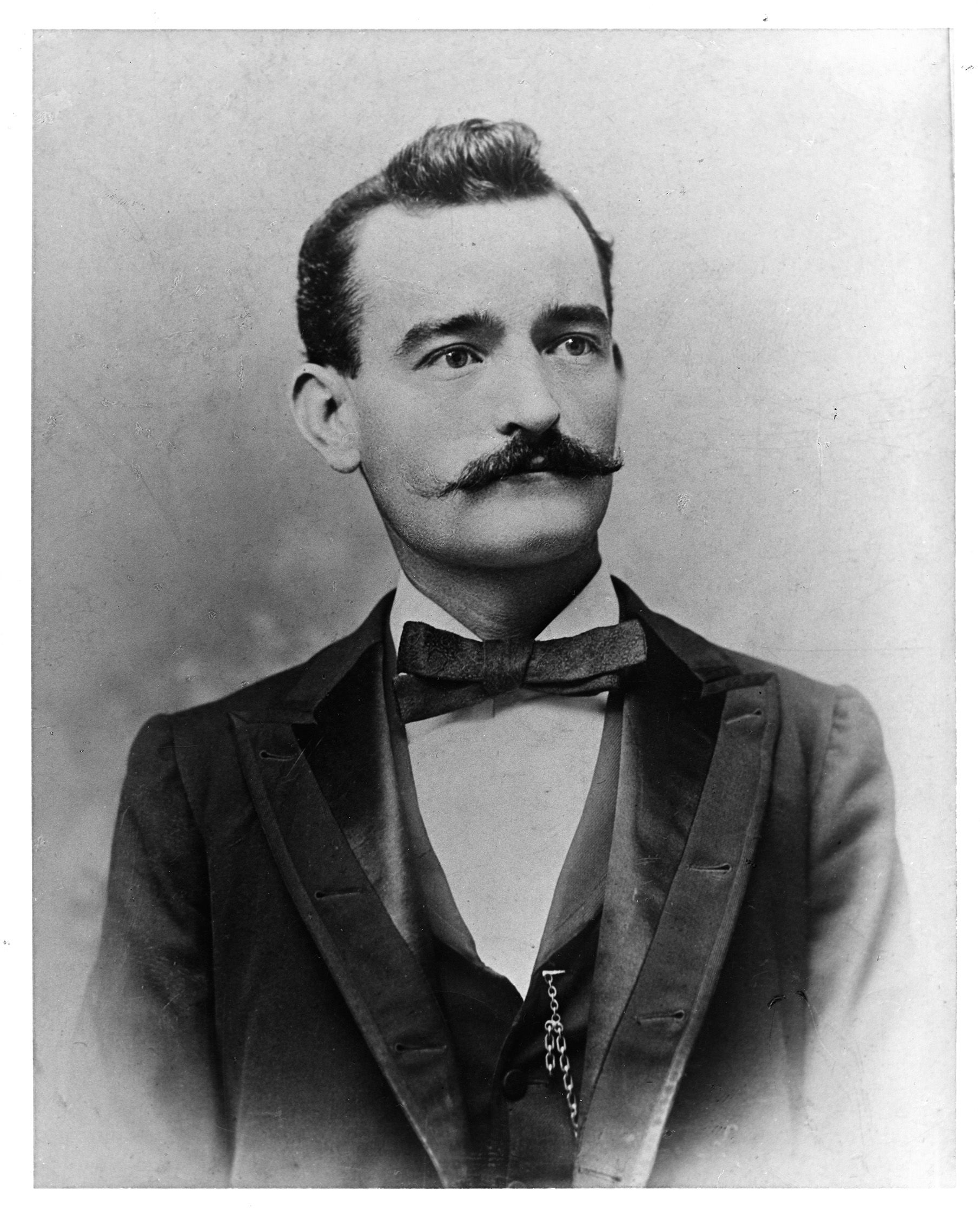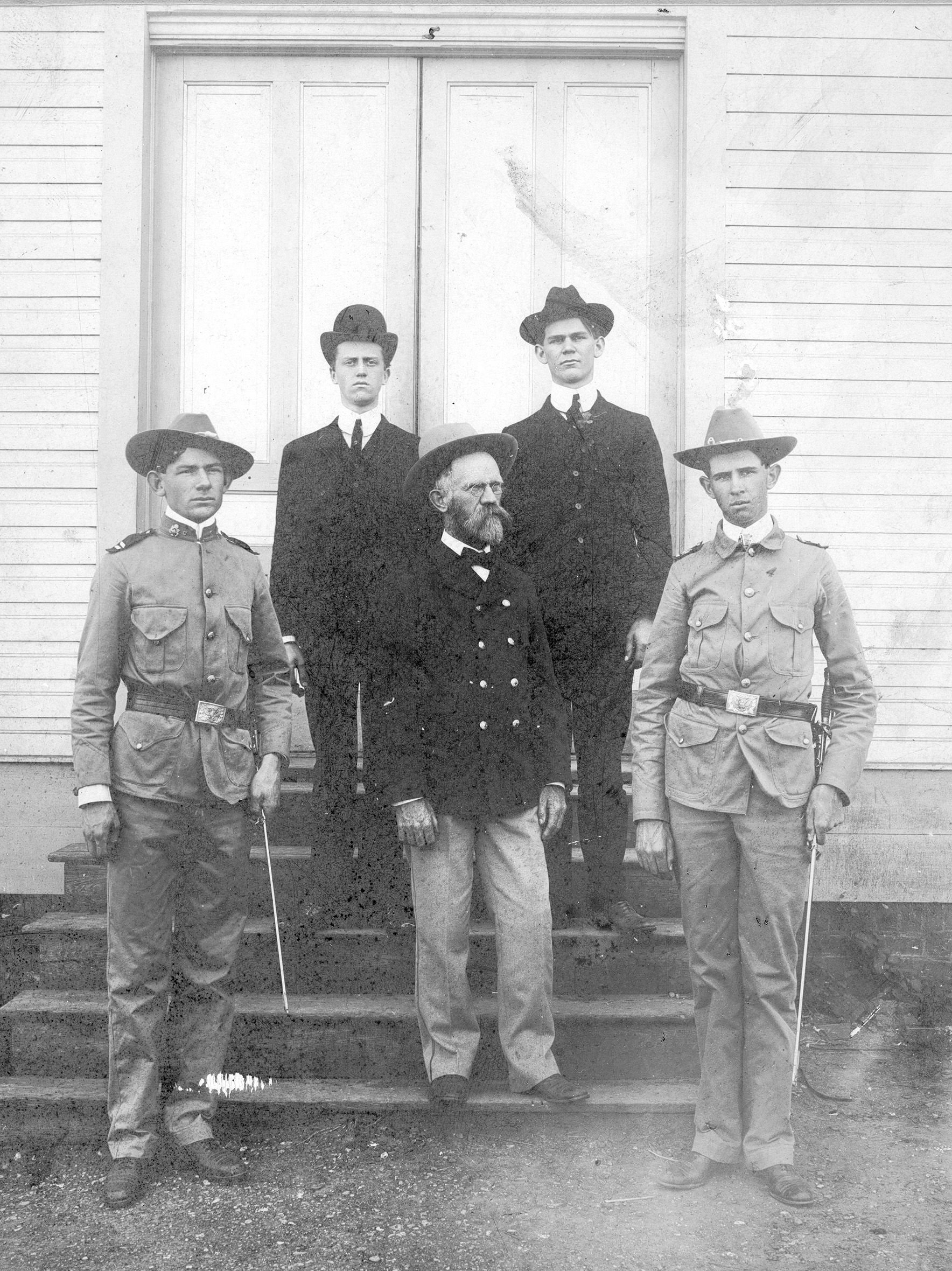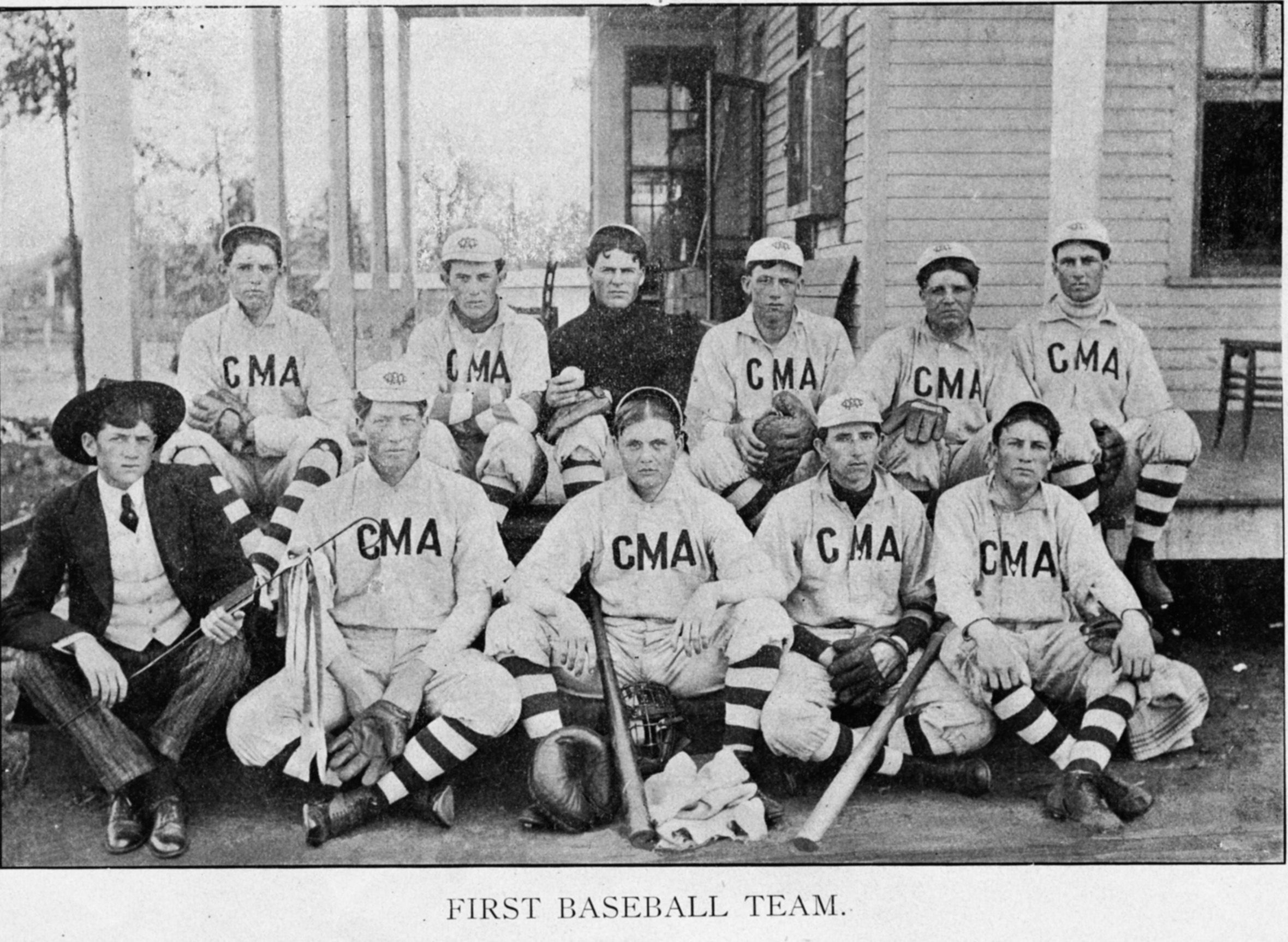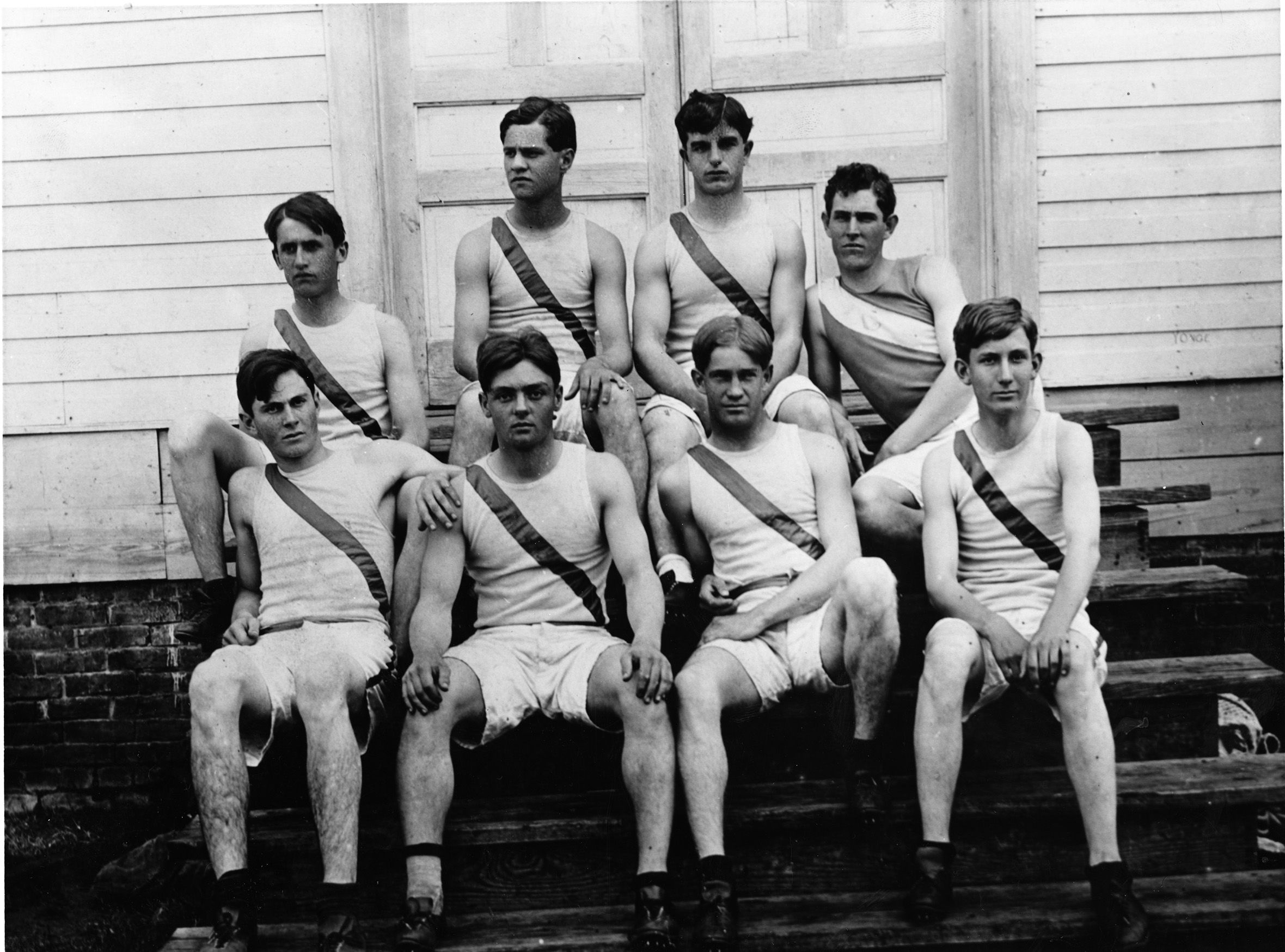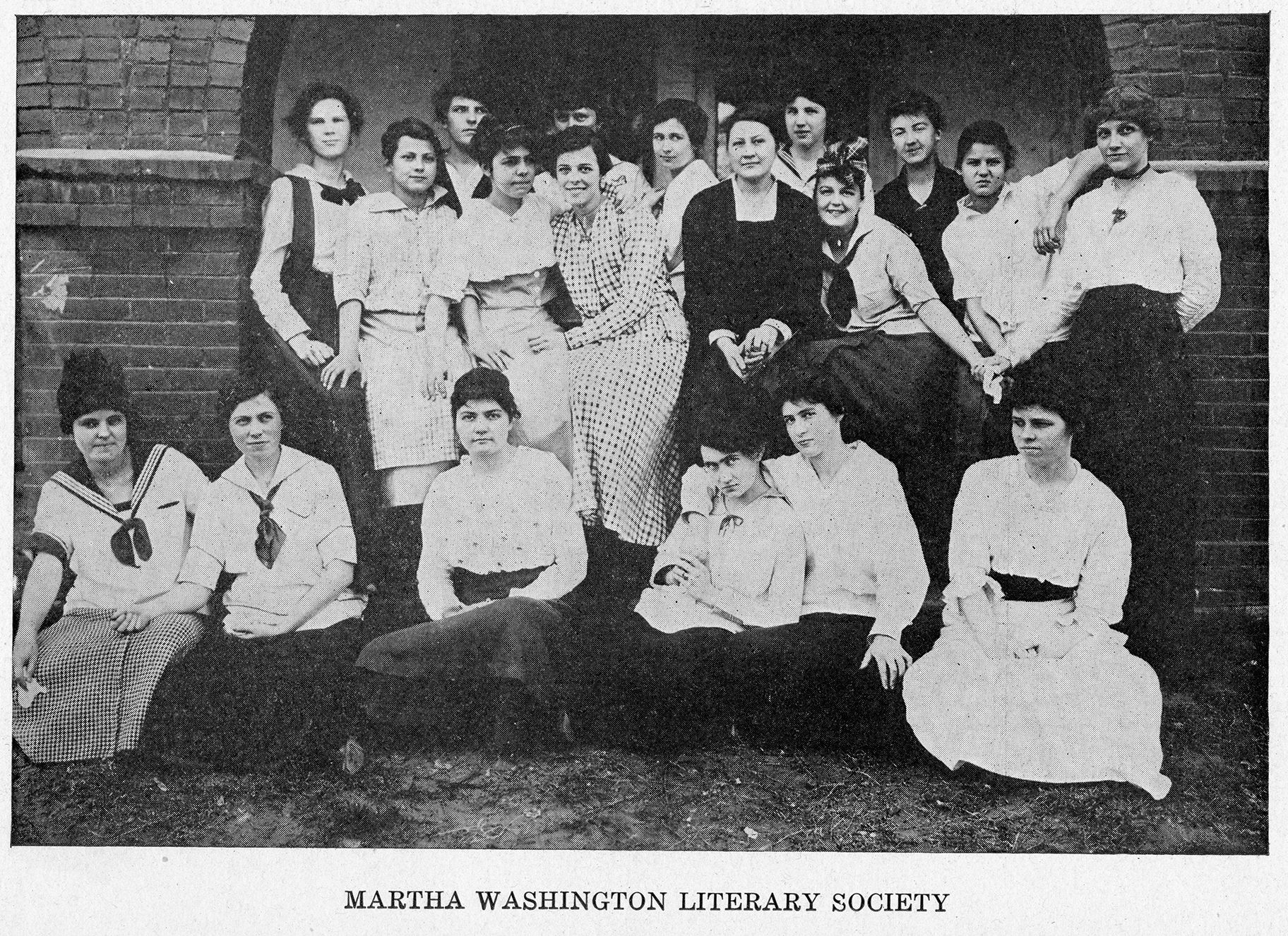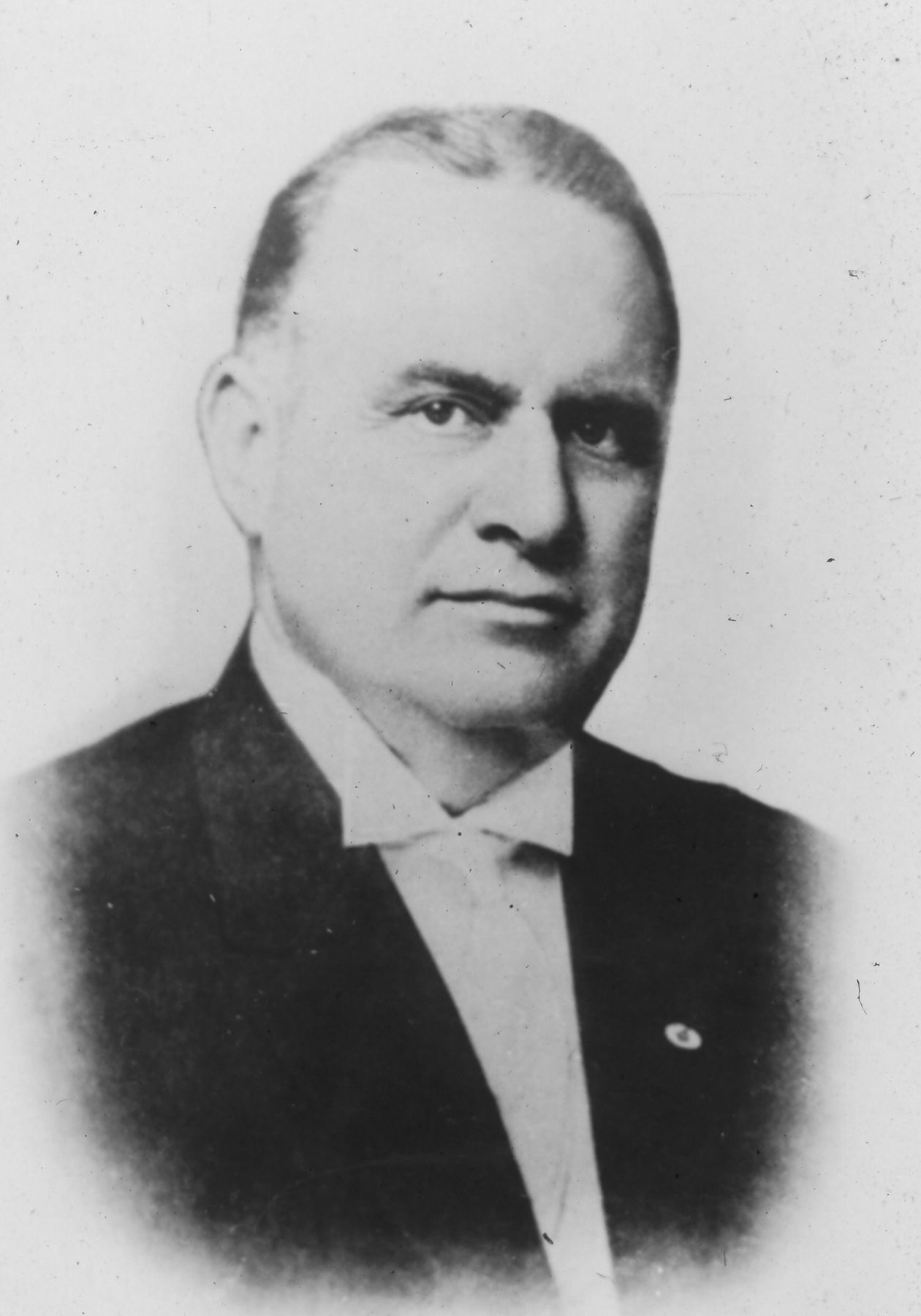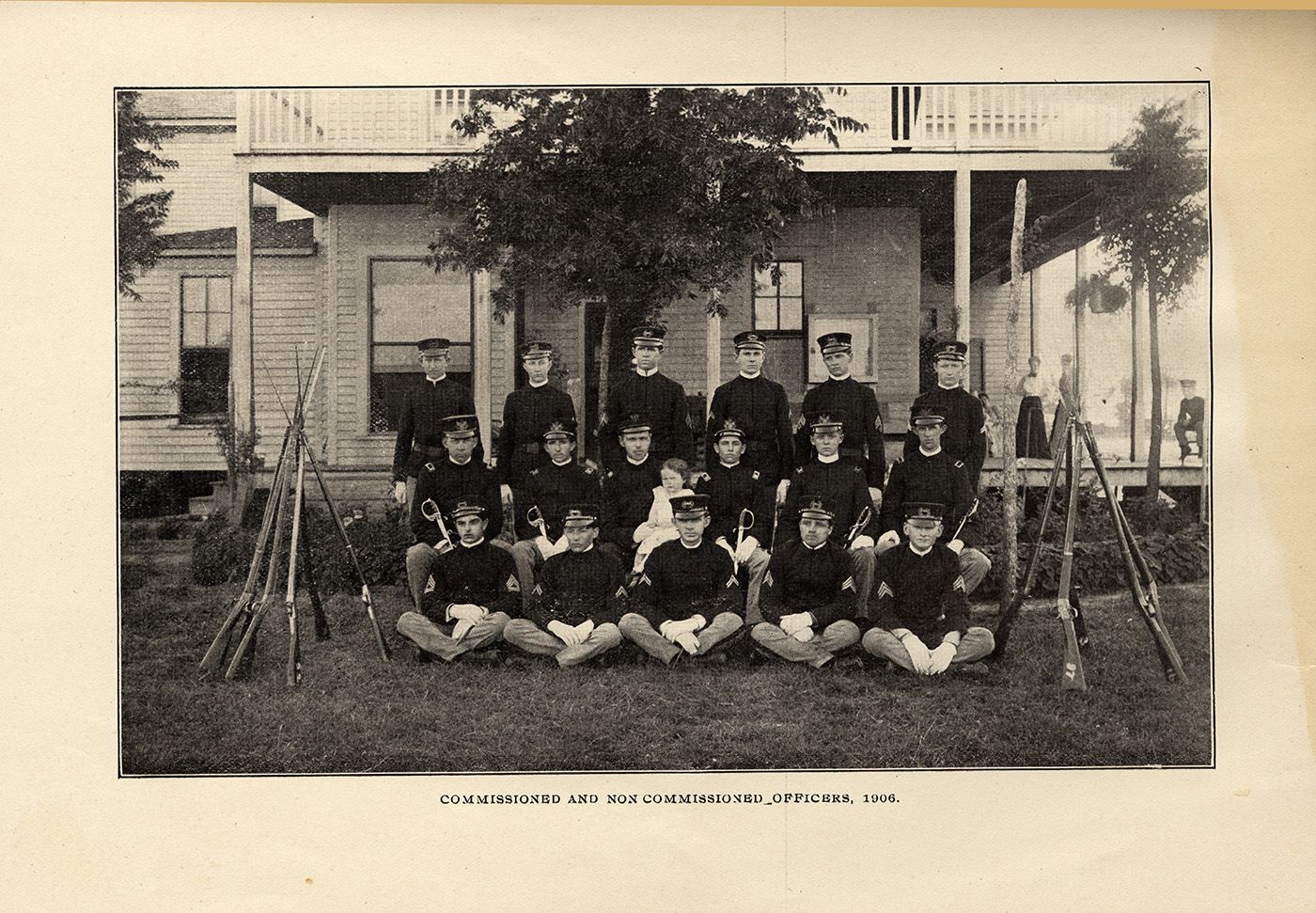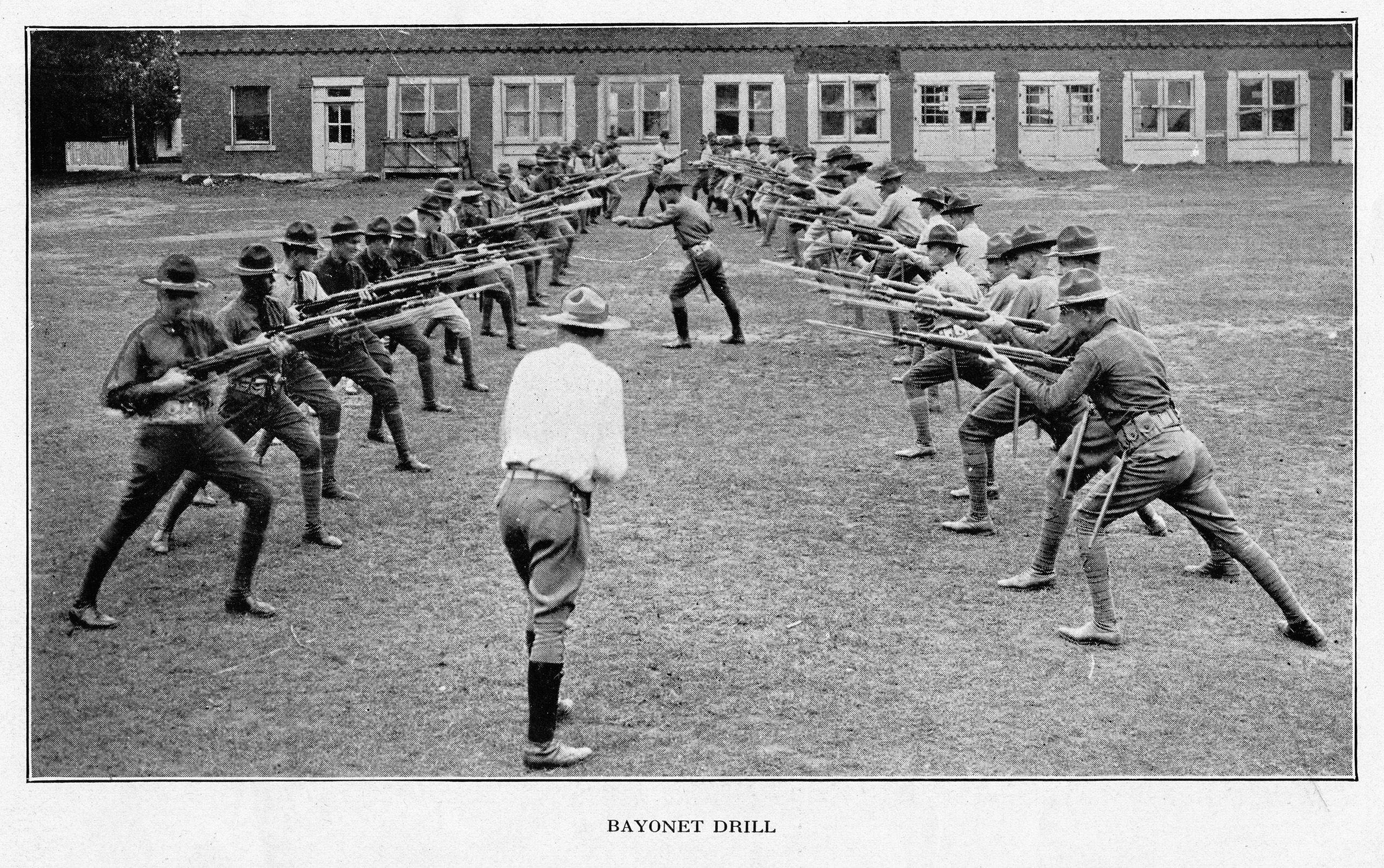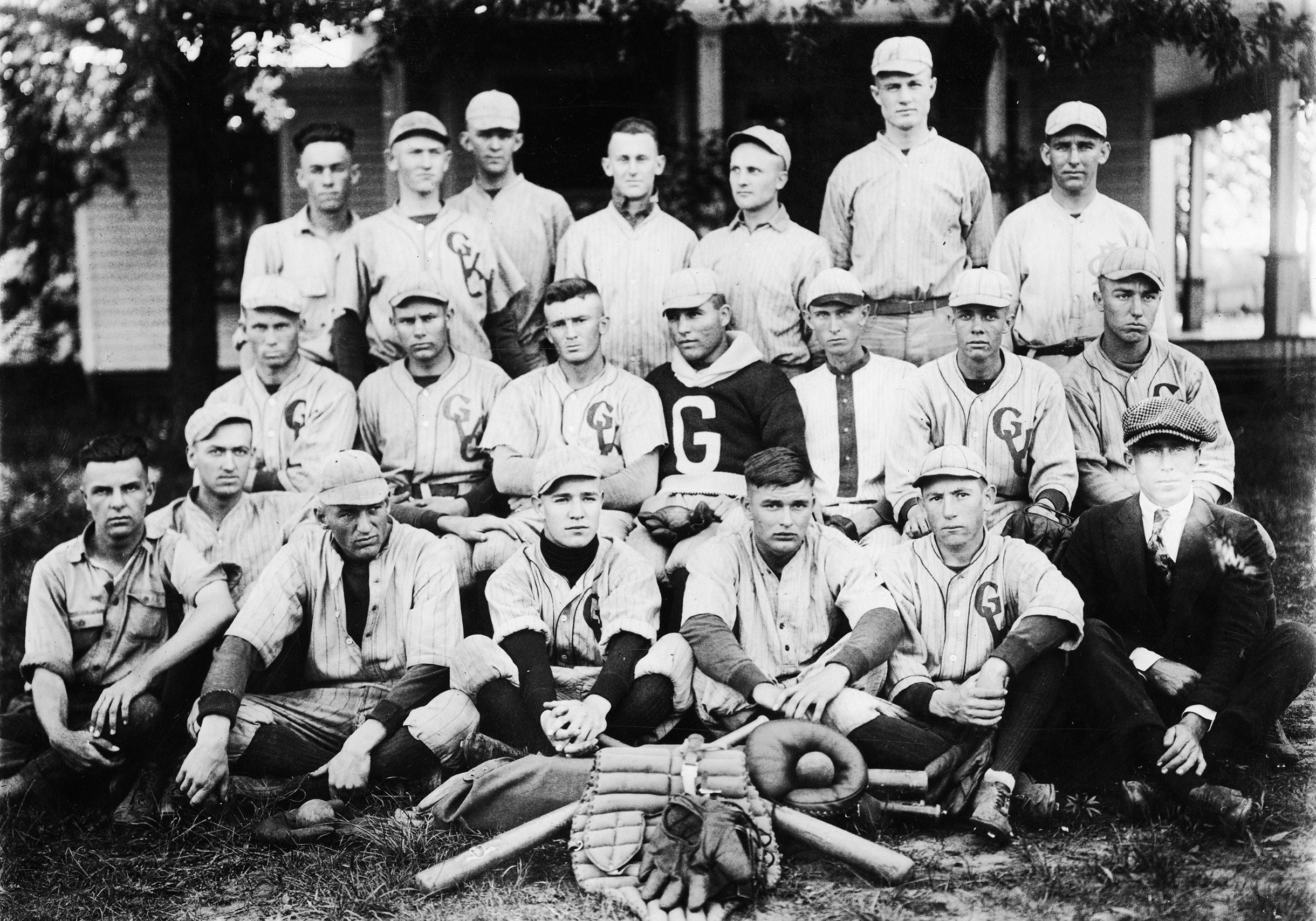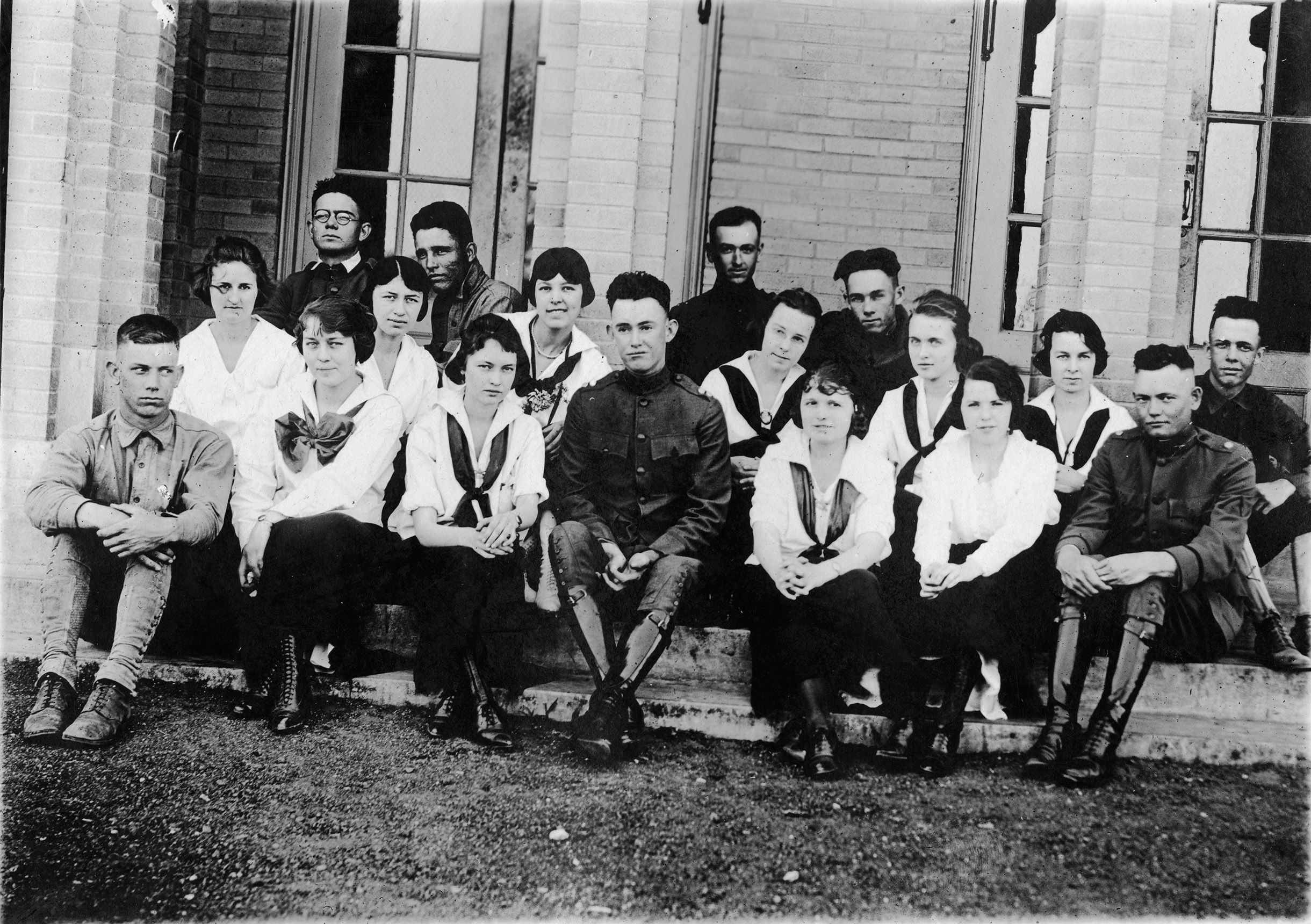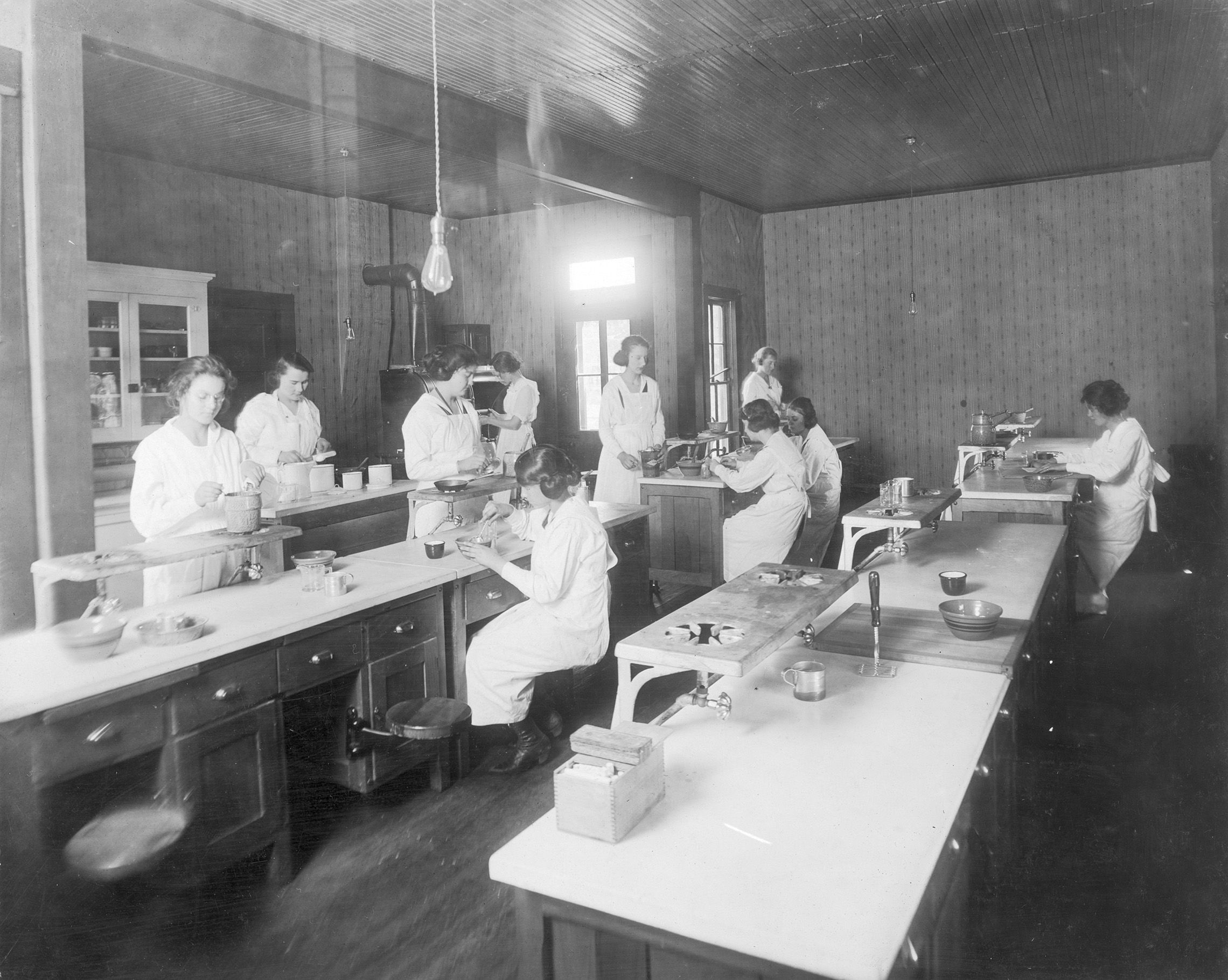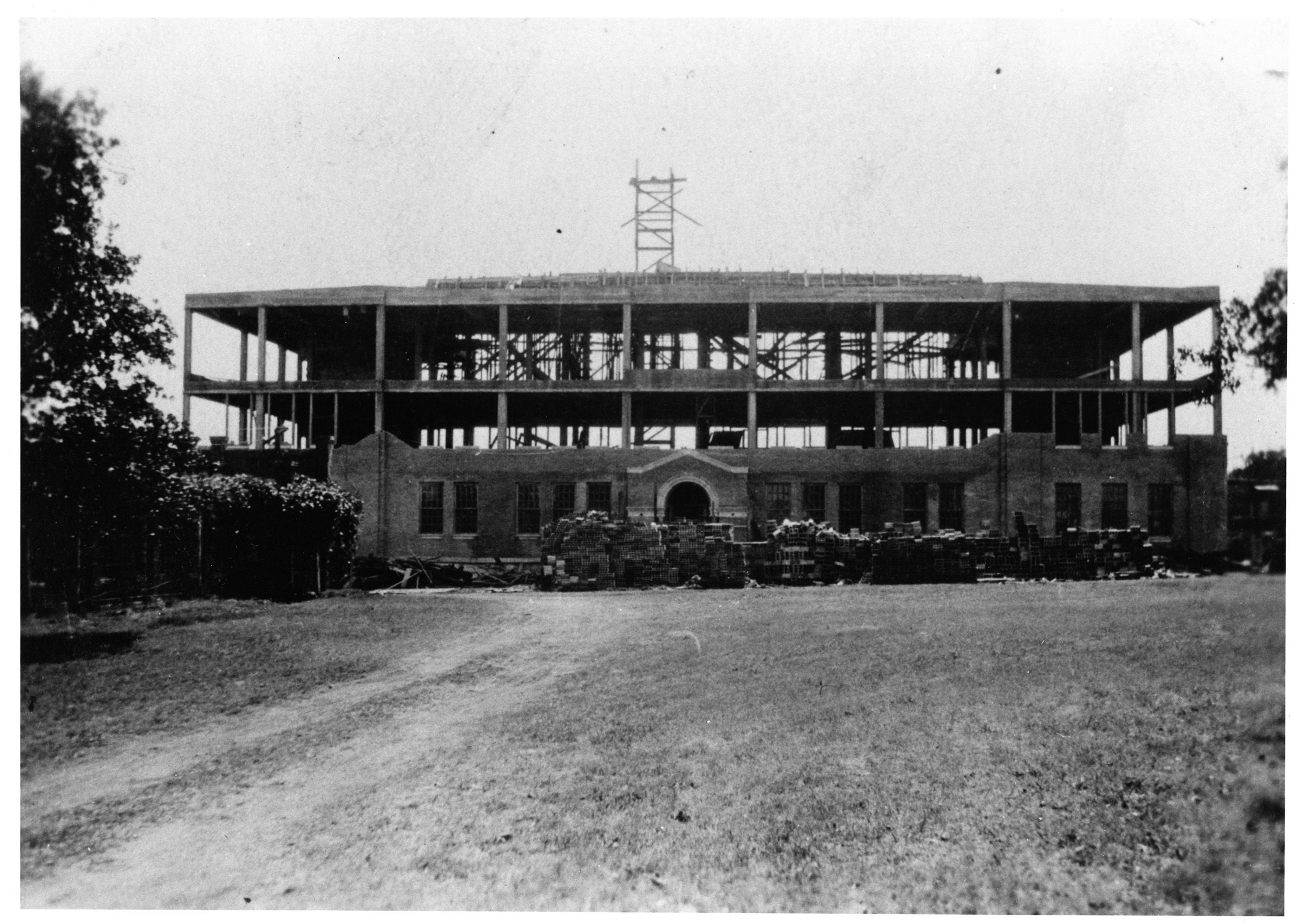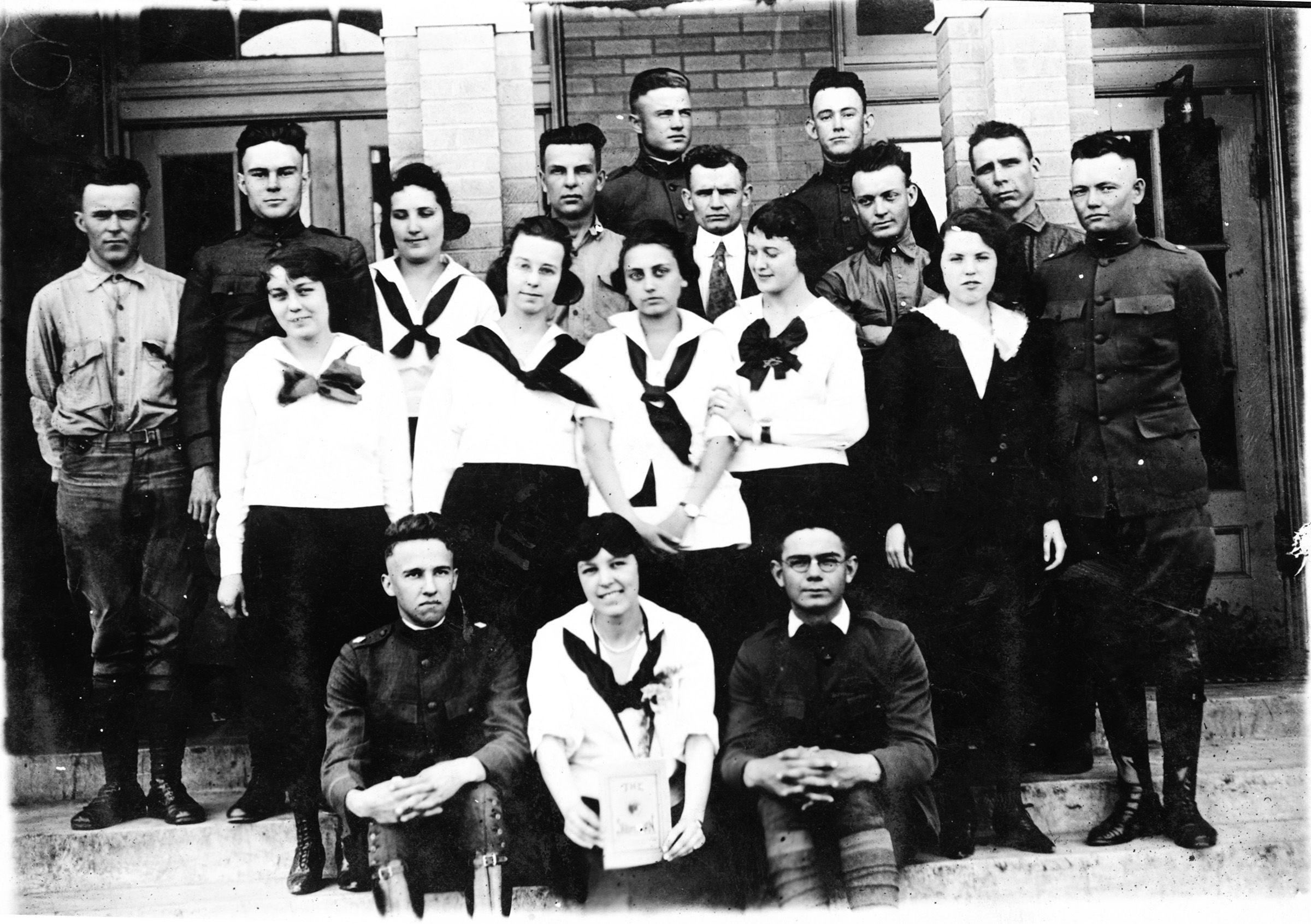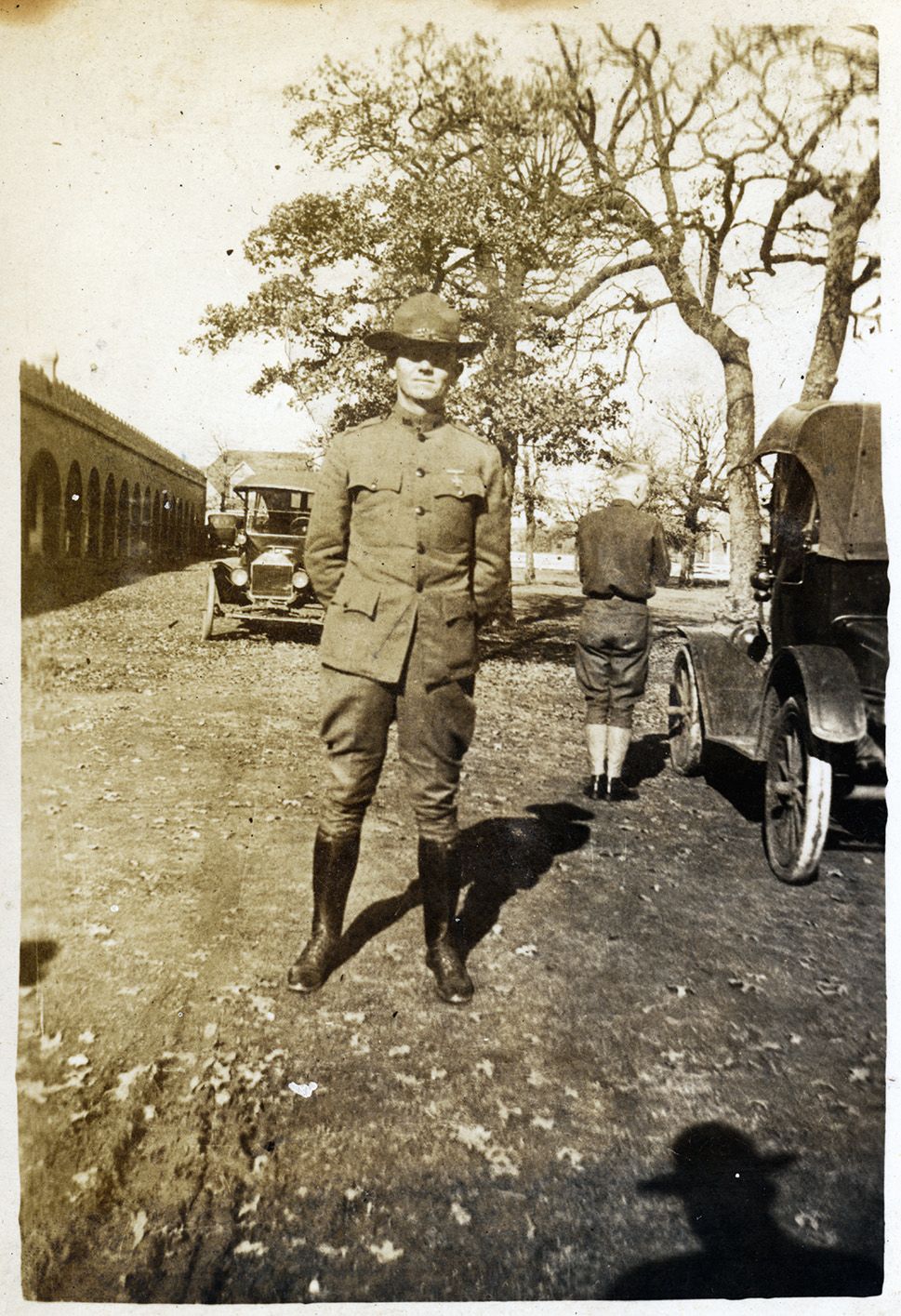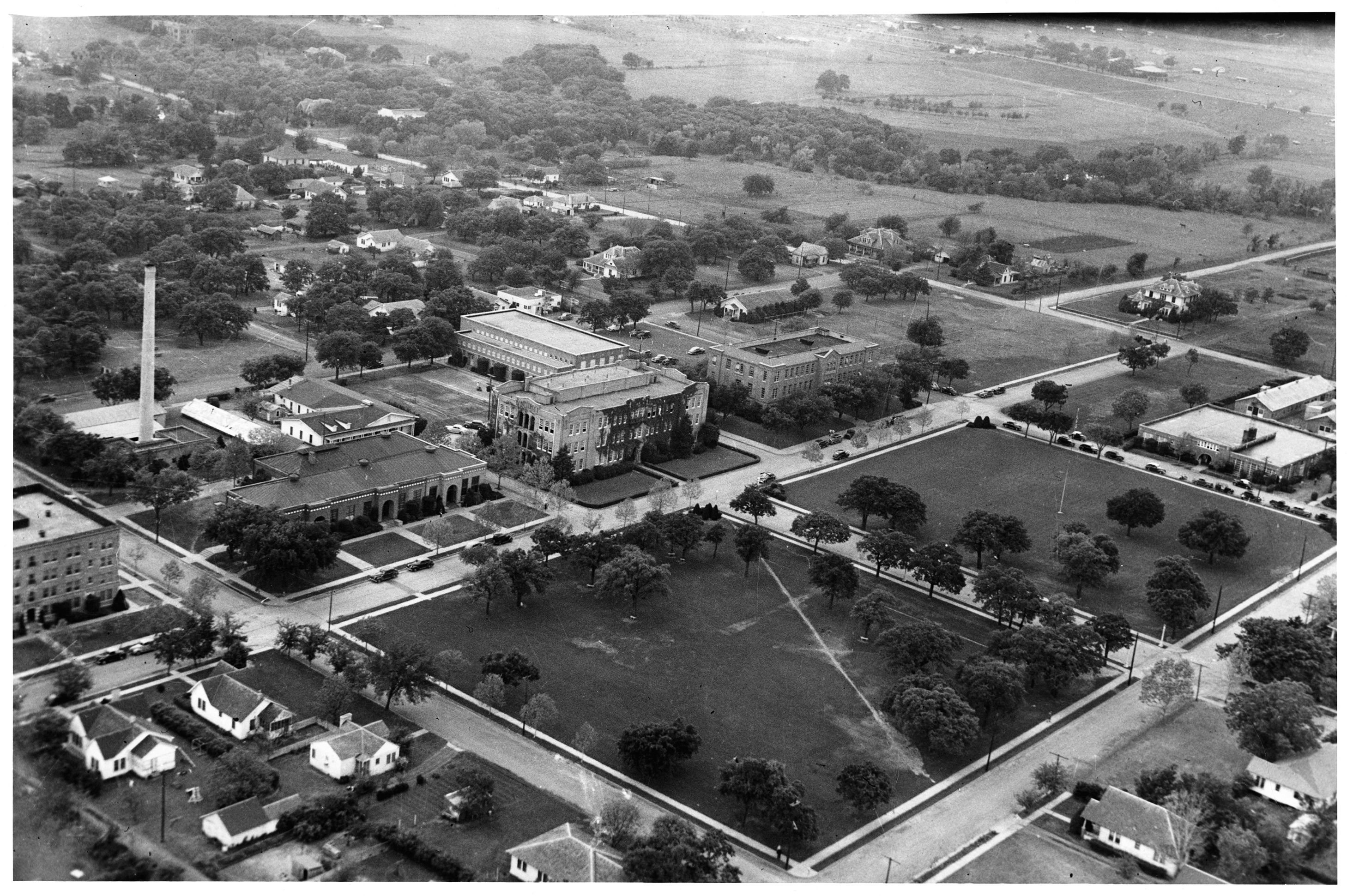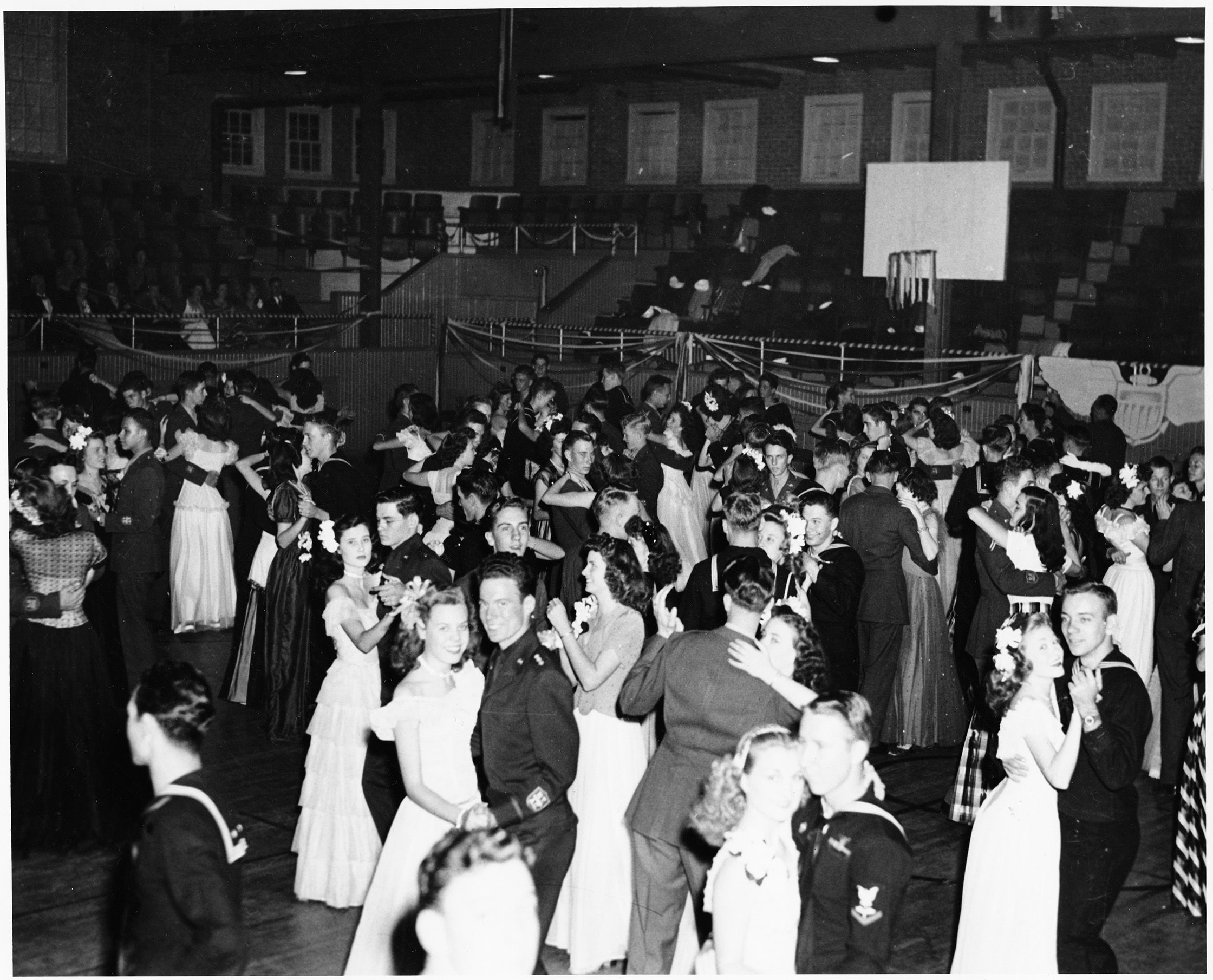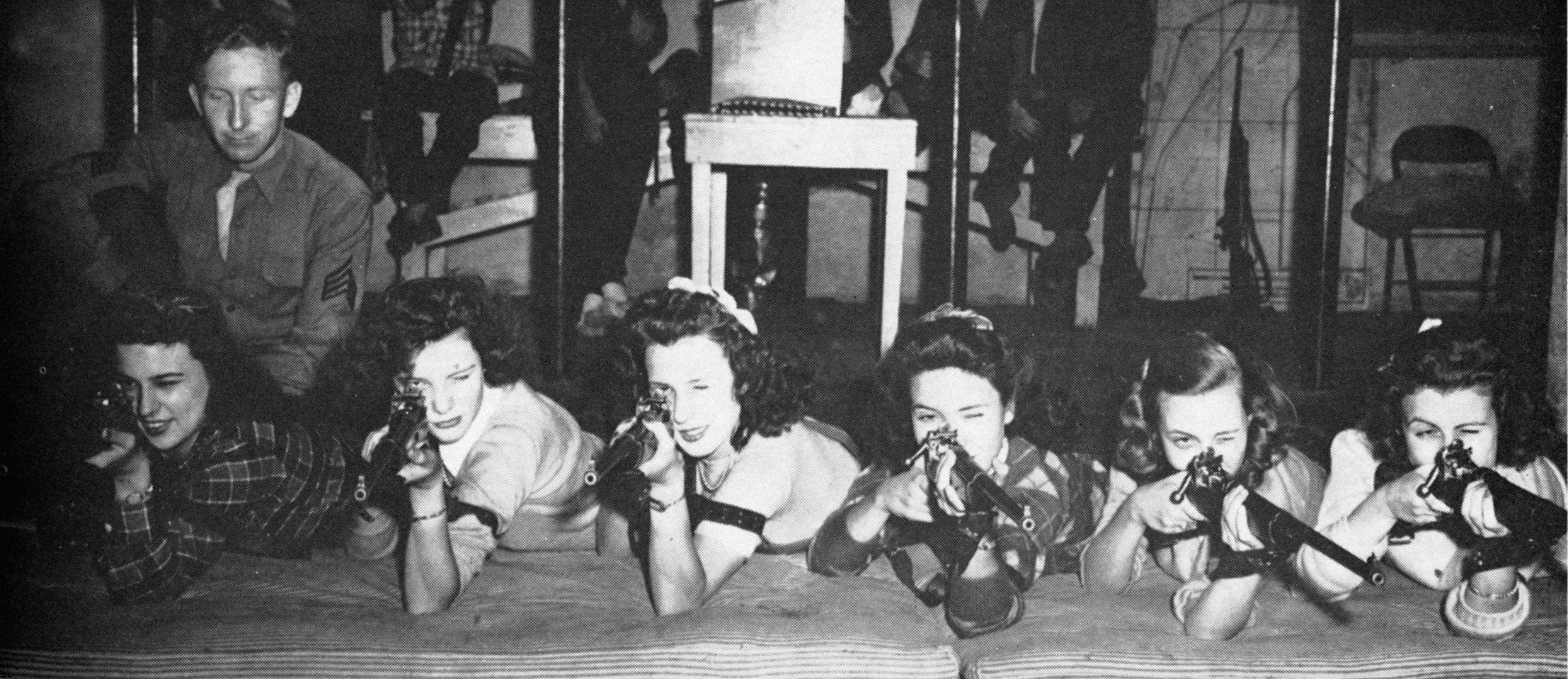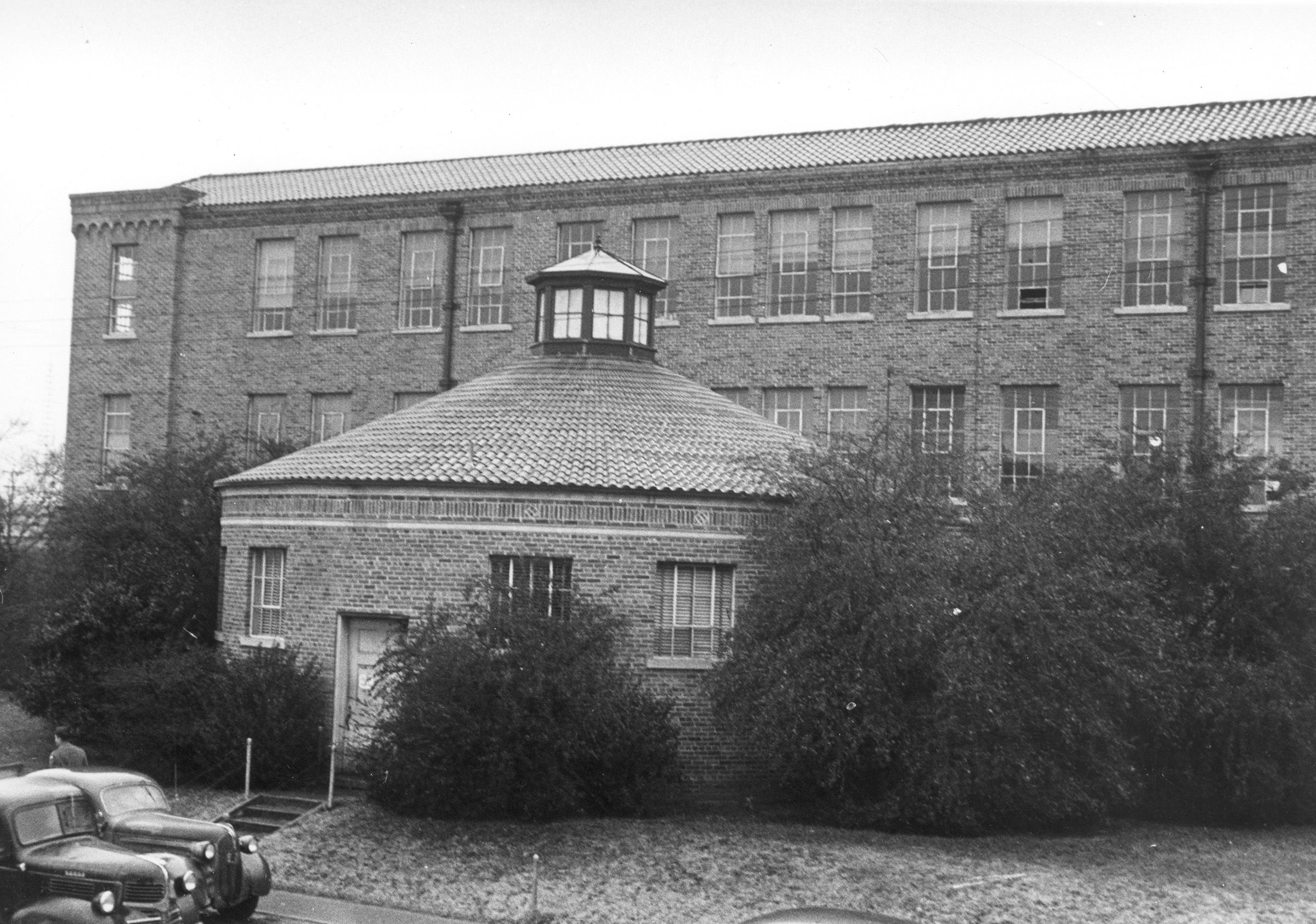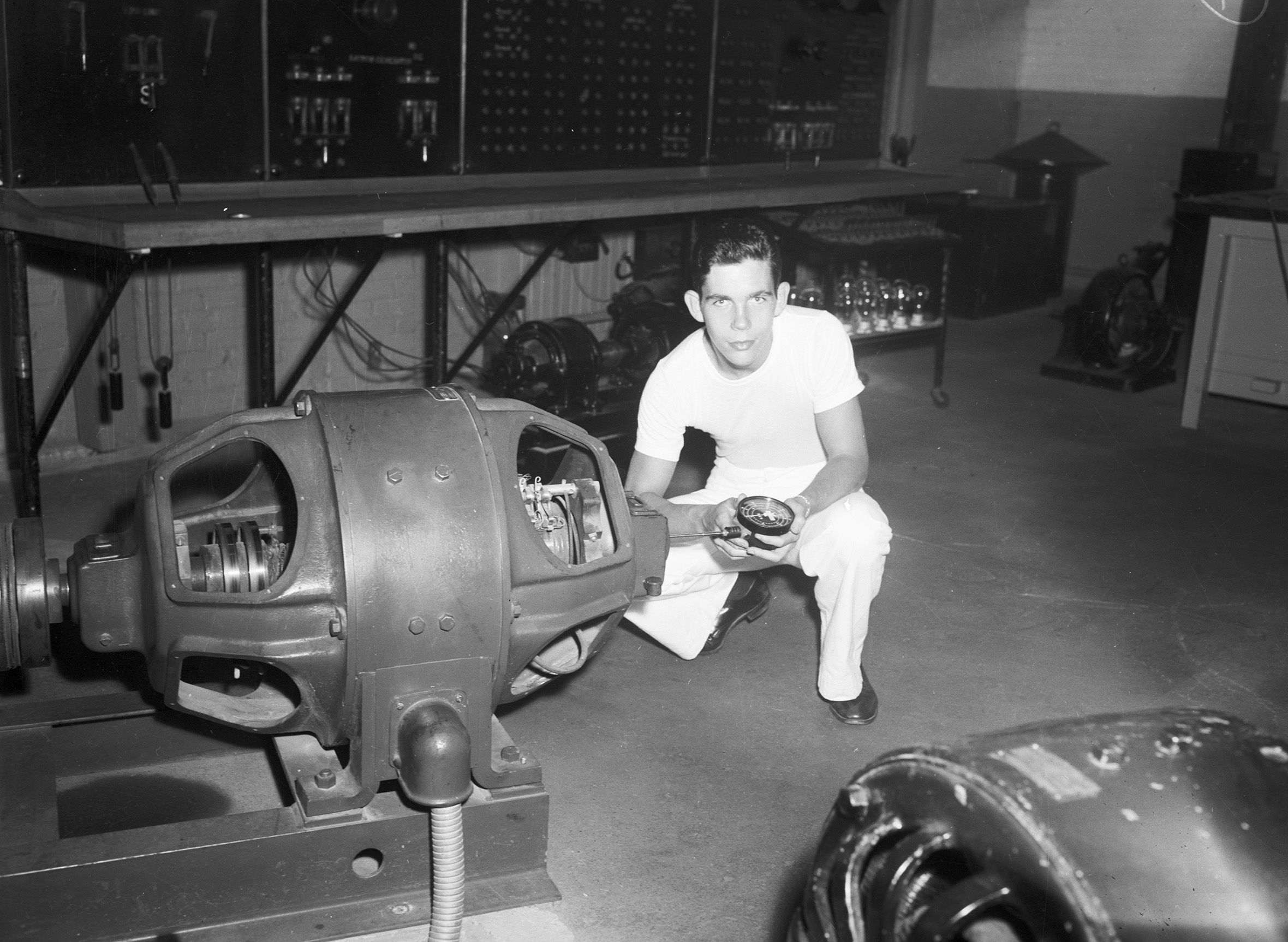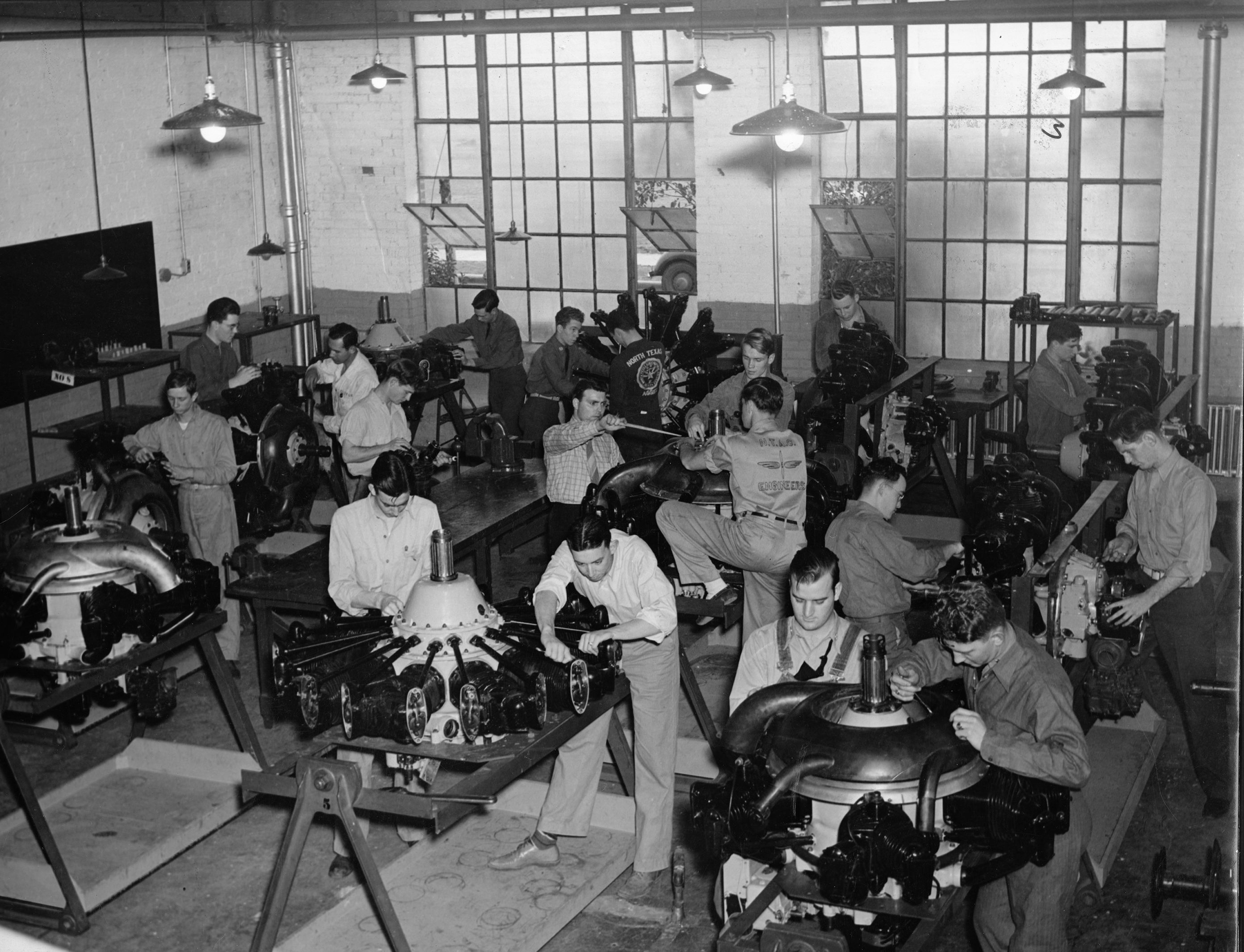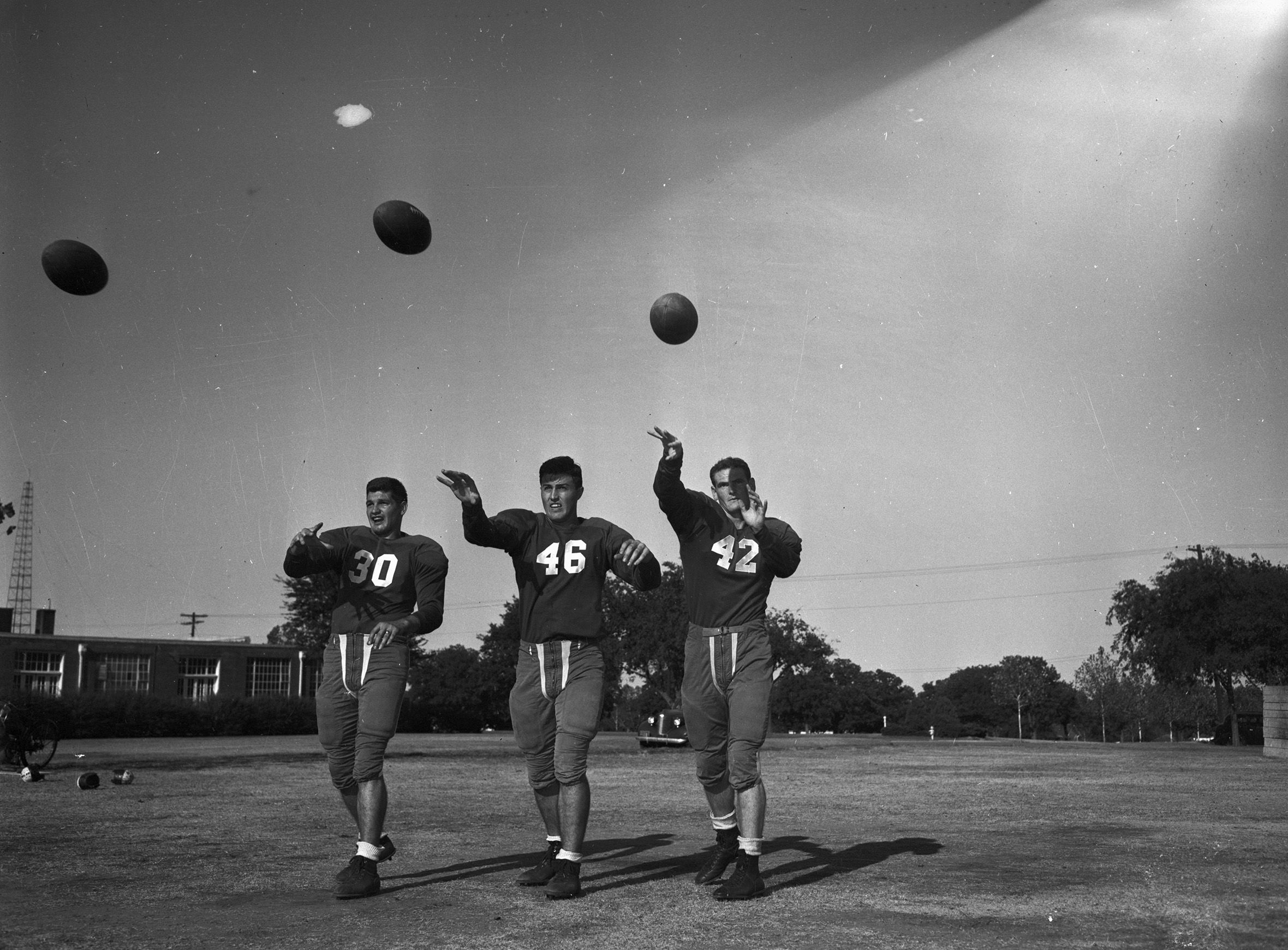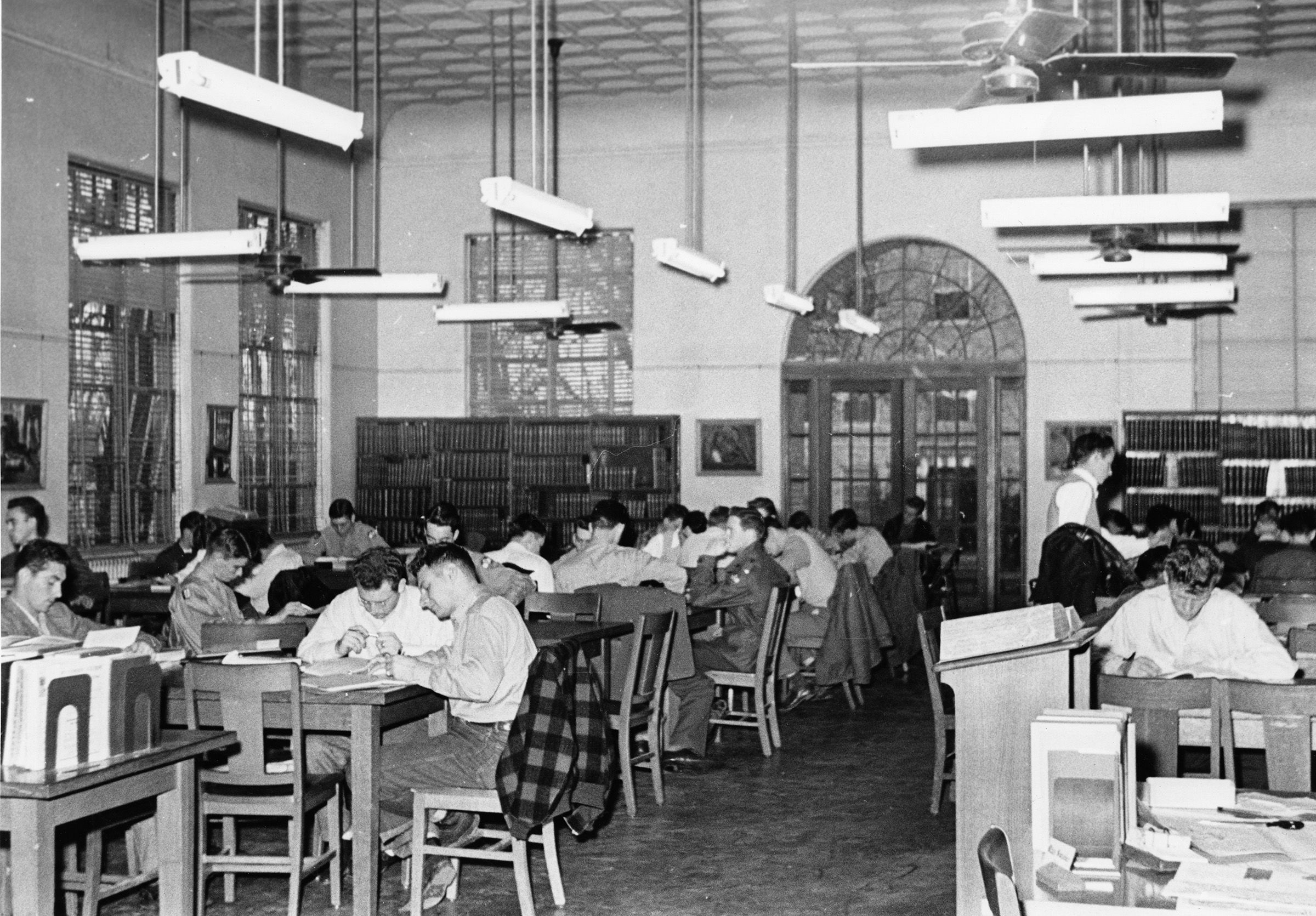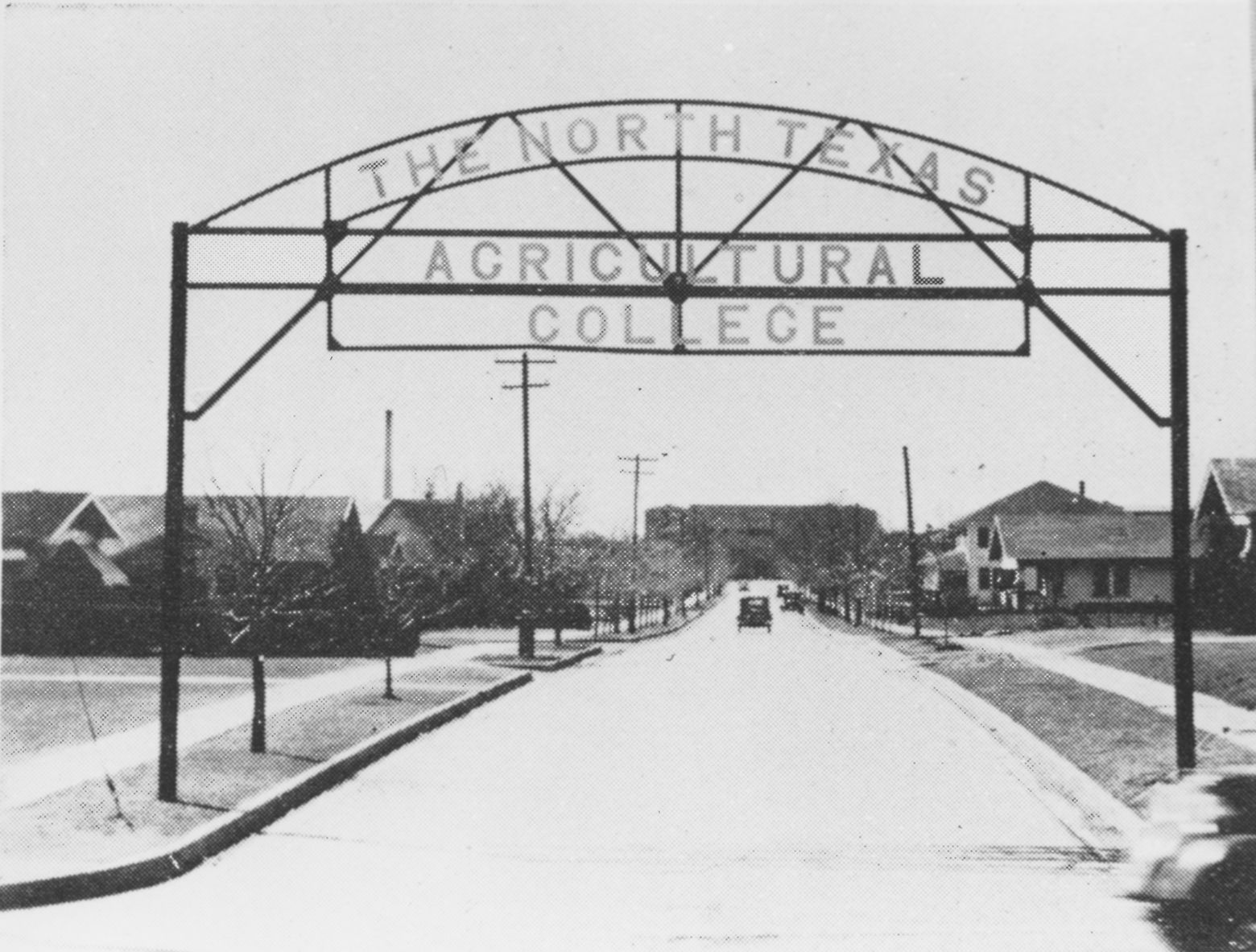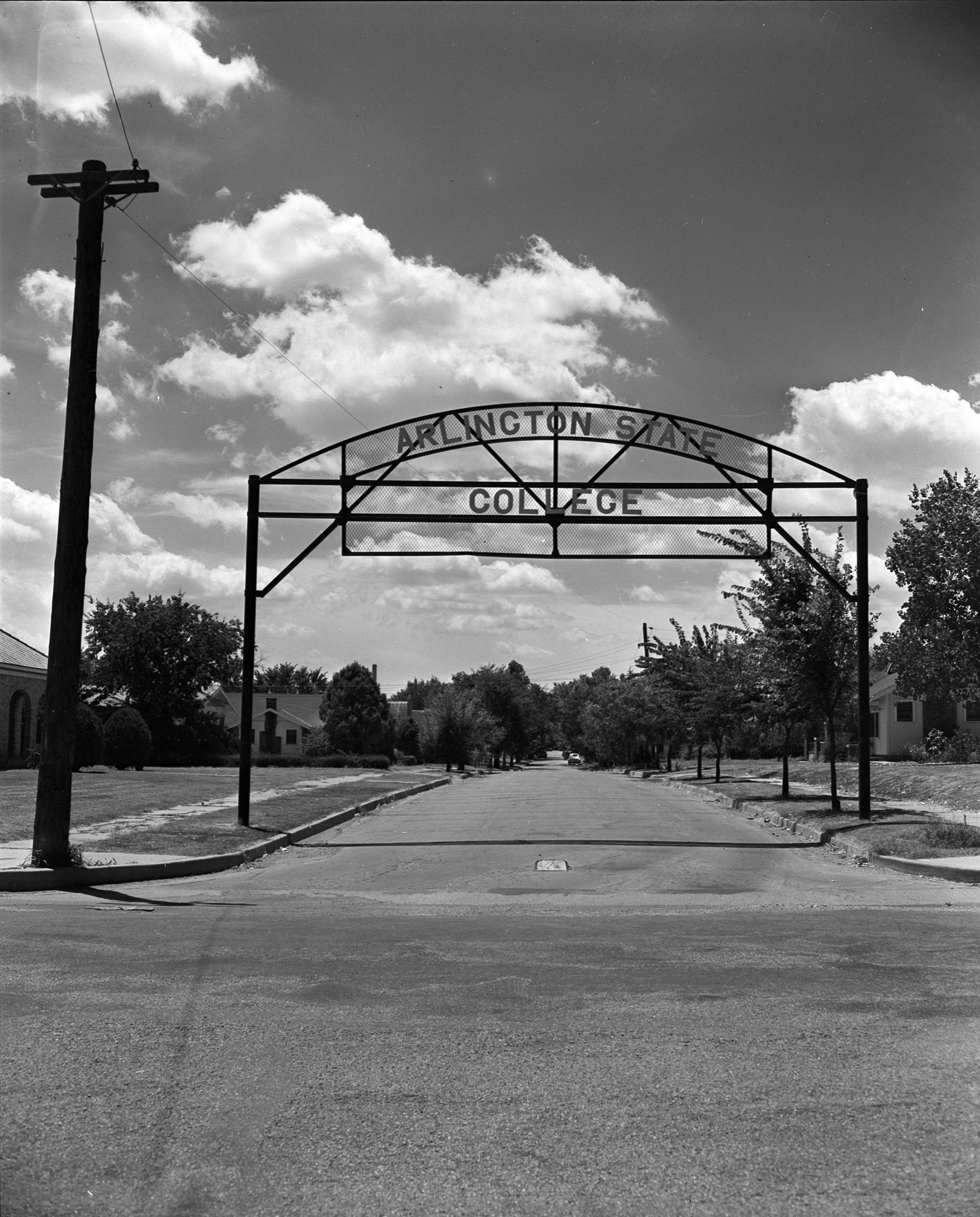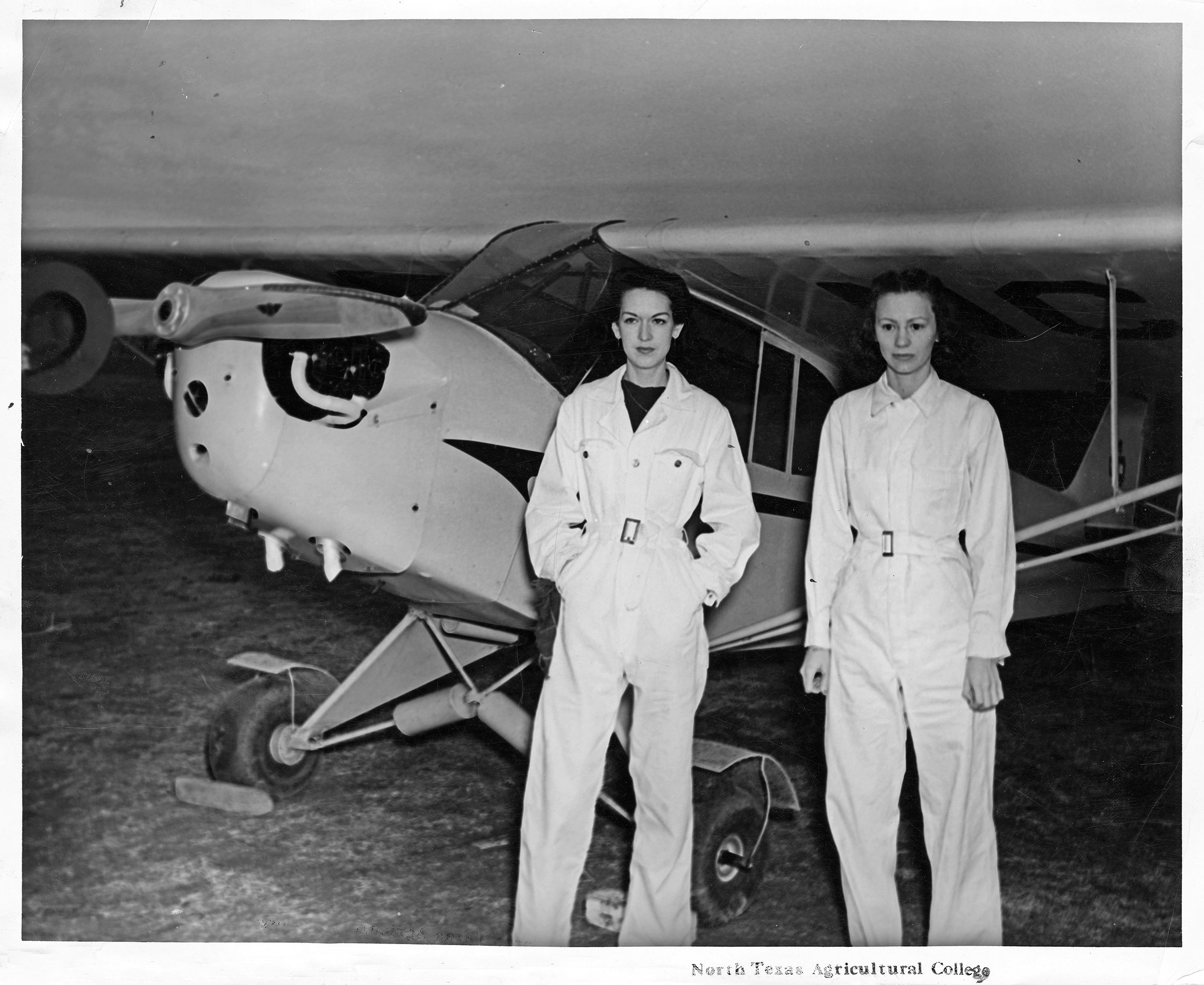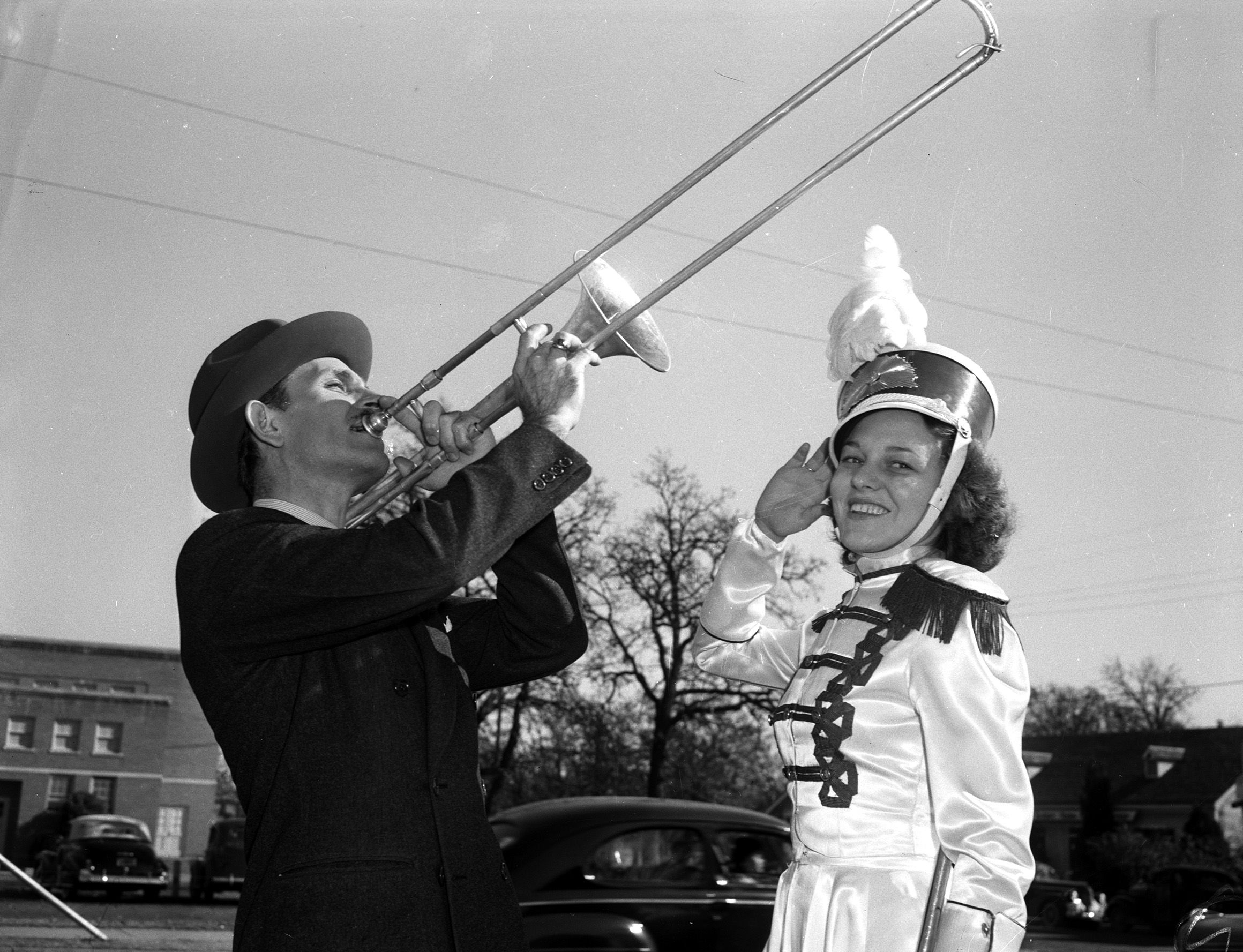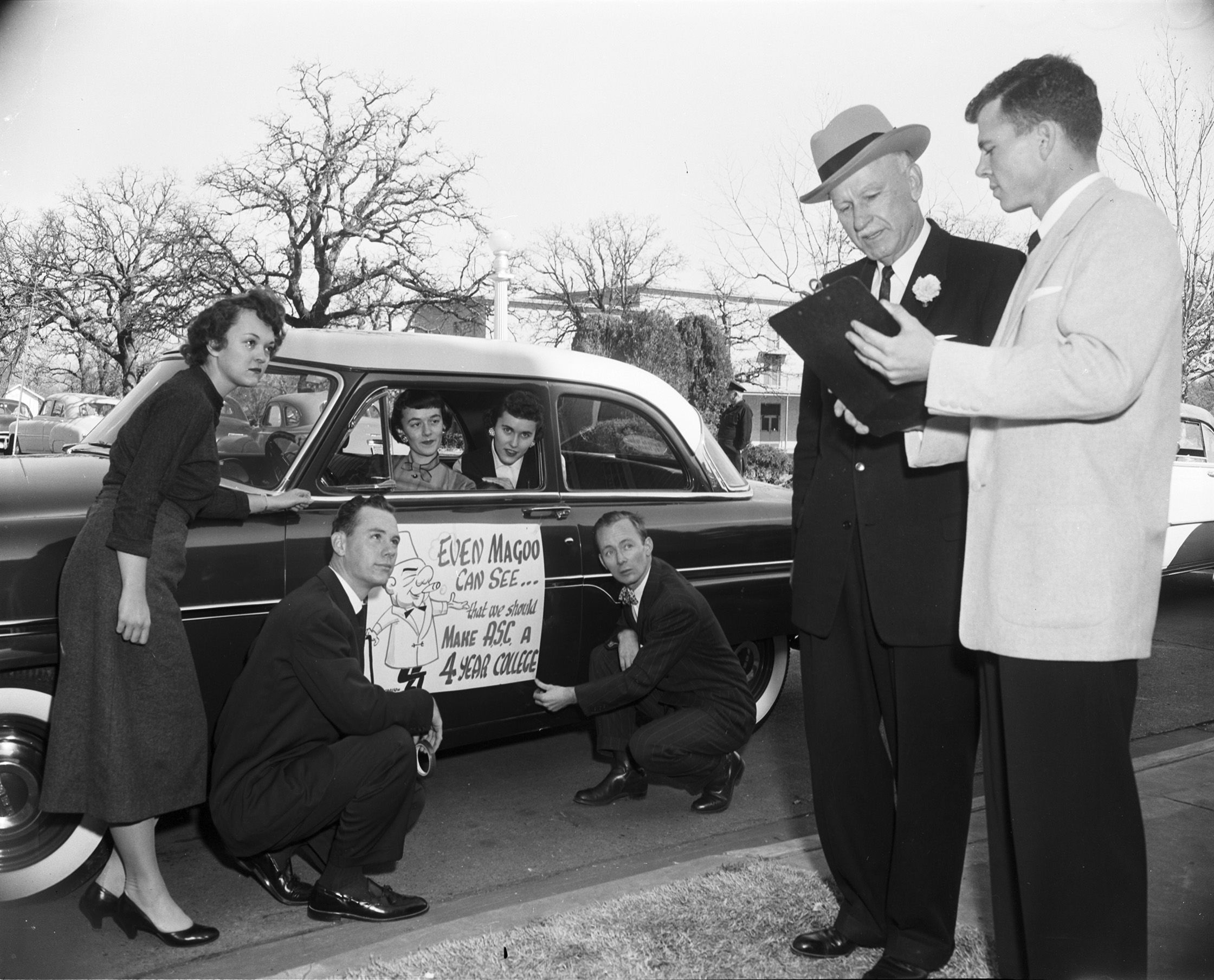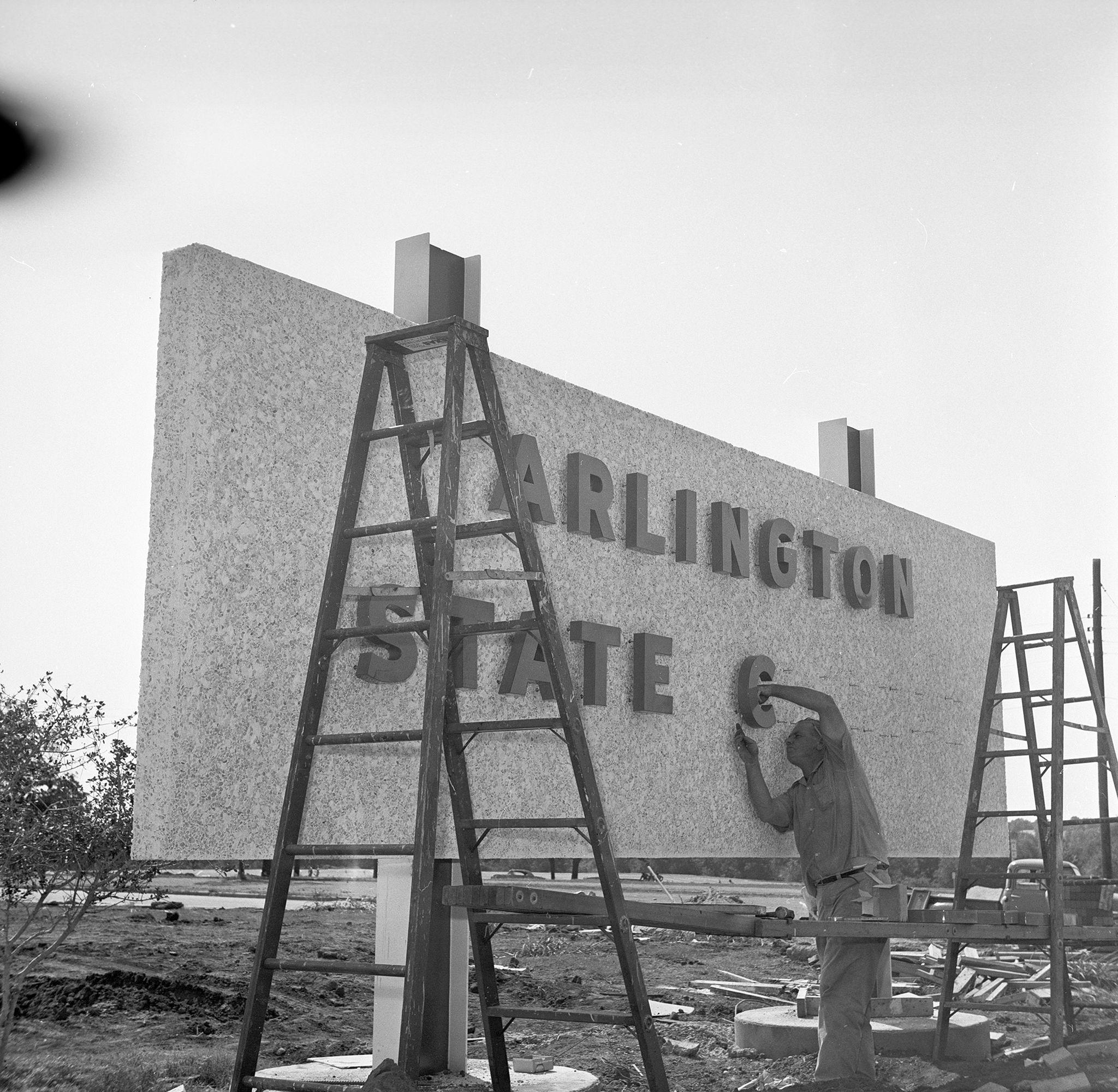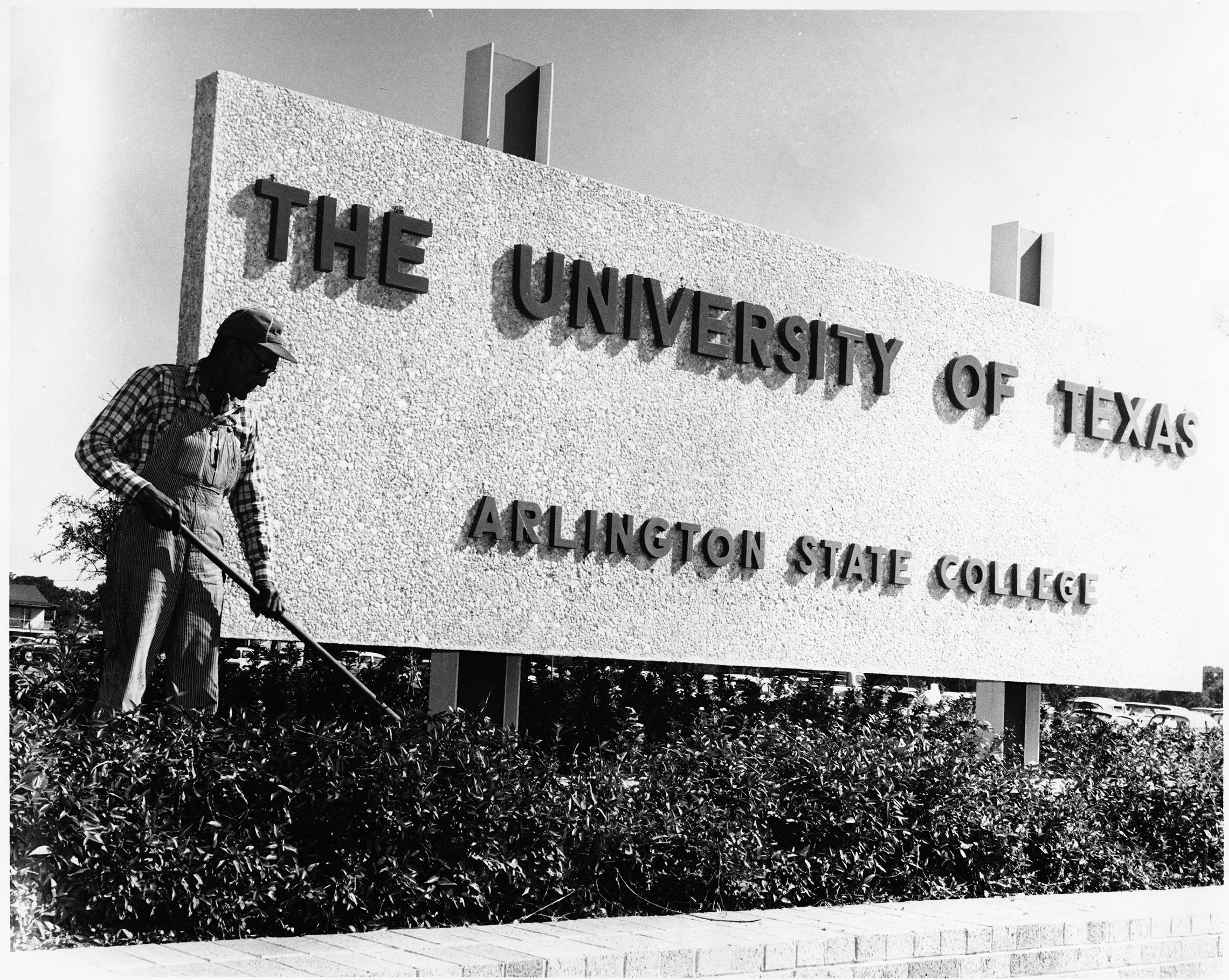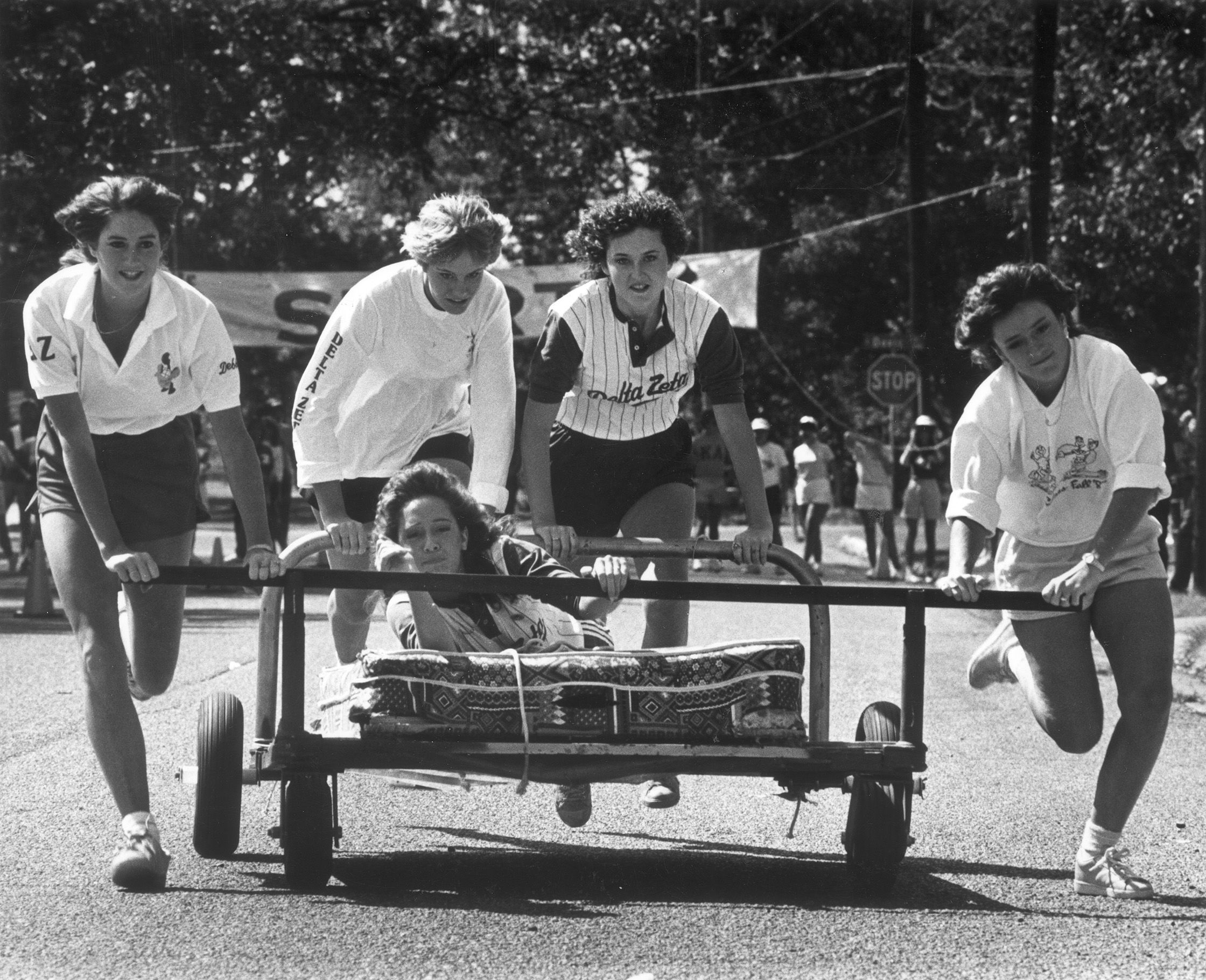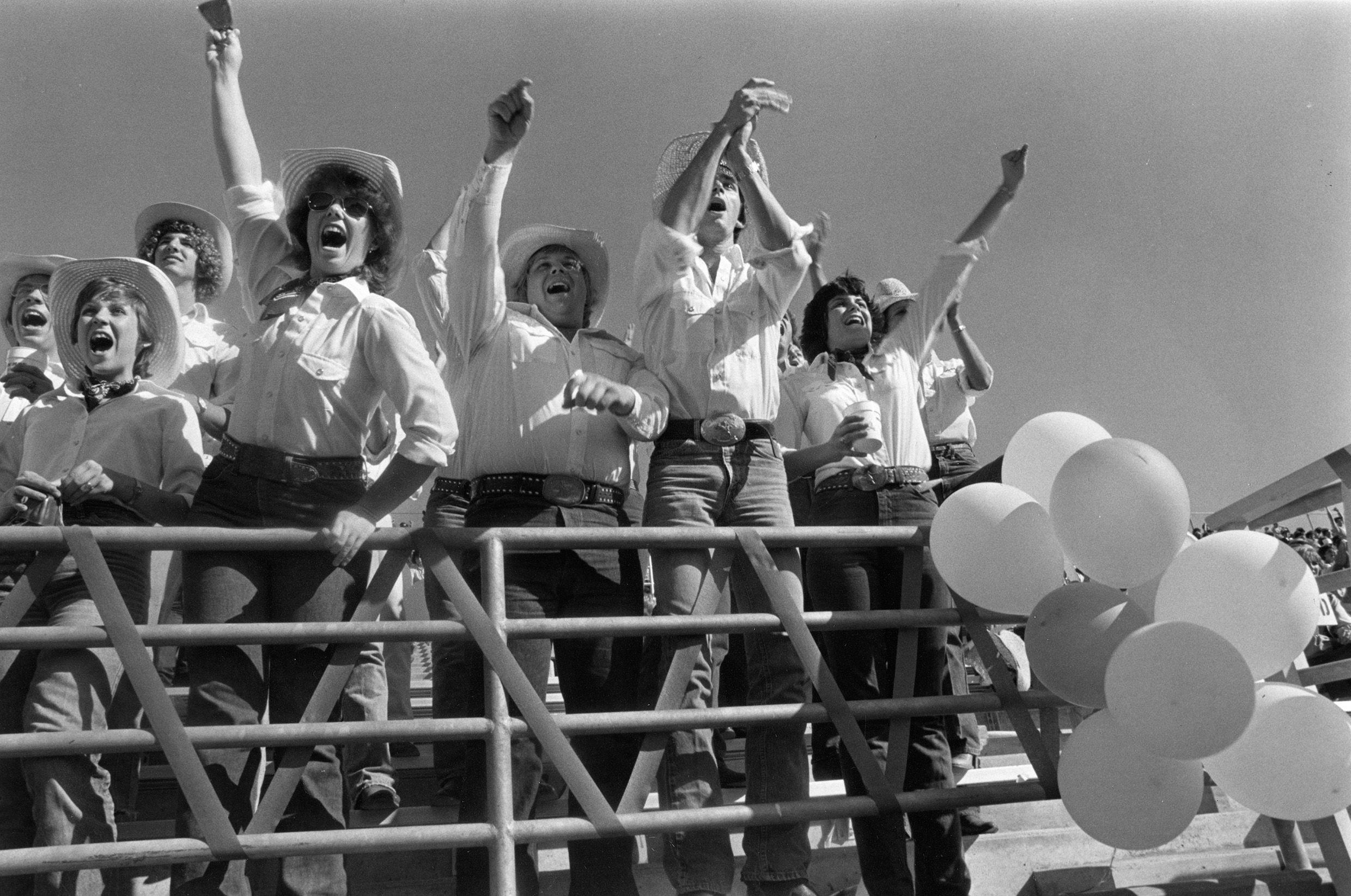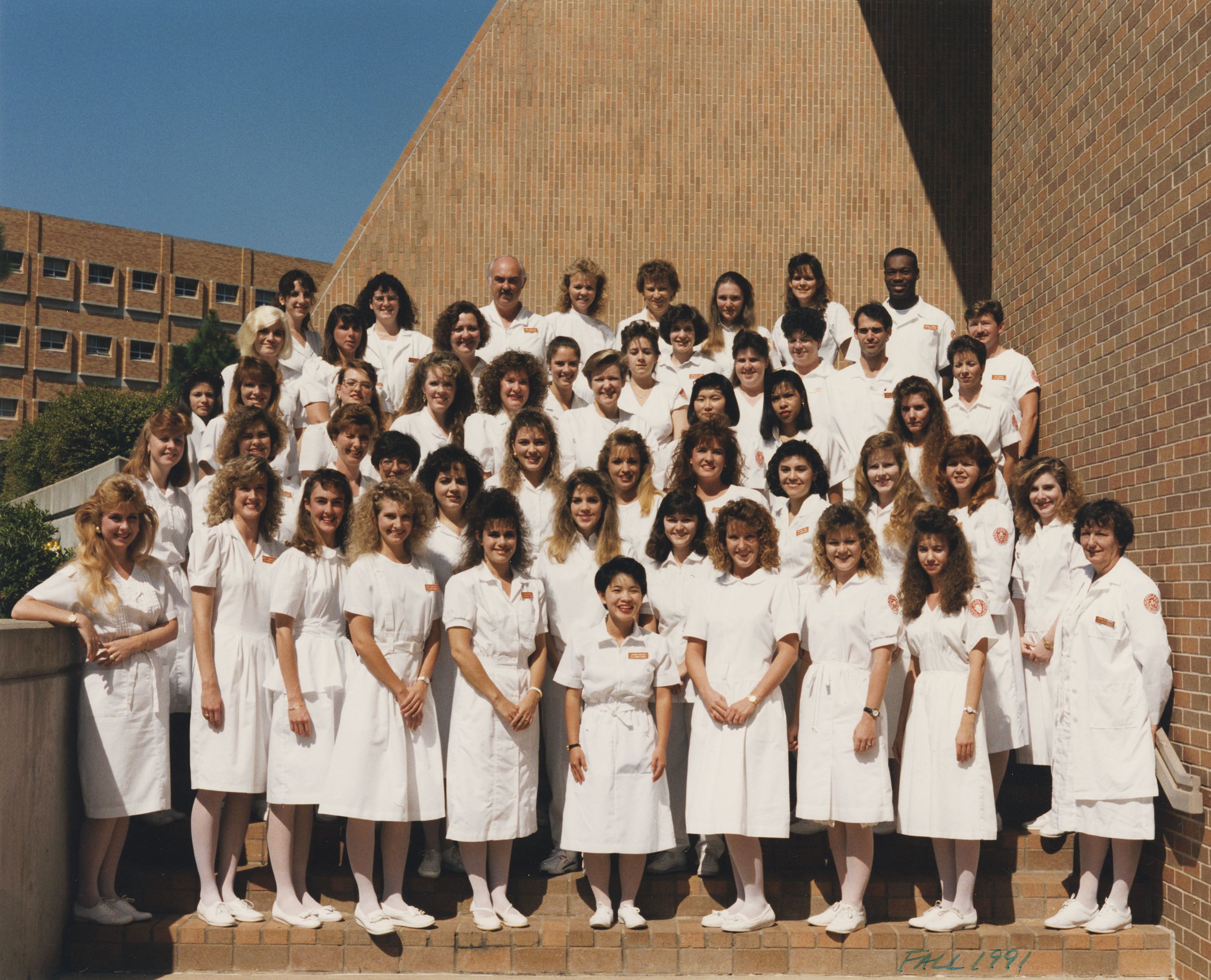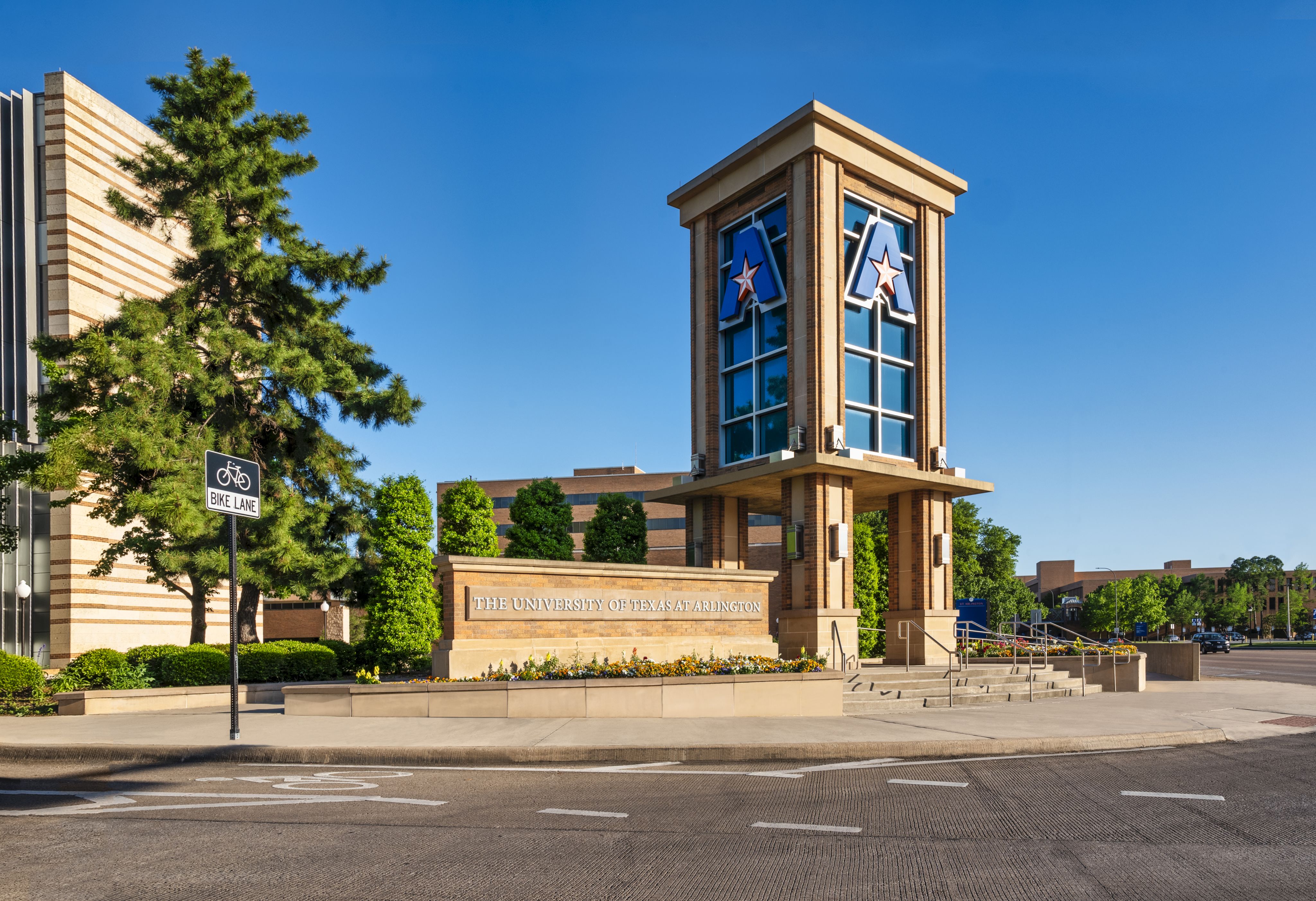
From private primary school to military academy to agricultural junior college to world-class research university, The University of Texas at Arlington has evolved over the past 130 years to become the academic powerhouse and community pillar it is today. Take a look back at the many milestones, triumphs, challenges, and changes it experienced along the way.
Information from founding to 1995 comes from "Transitions: A Centennial History of the University of Texas at Arlington, 1895-1995" by Gerald Saxon.
Historic photos courtesy of Special Collections at UT Arlington Libraries.
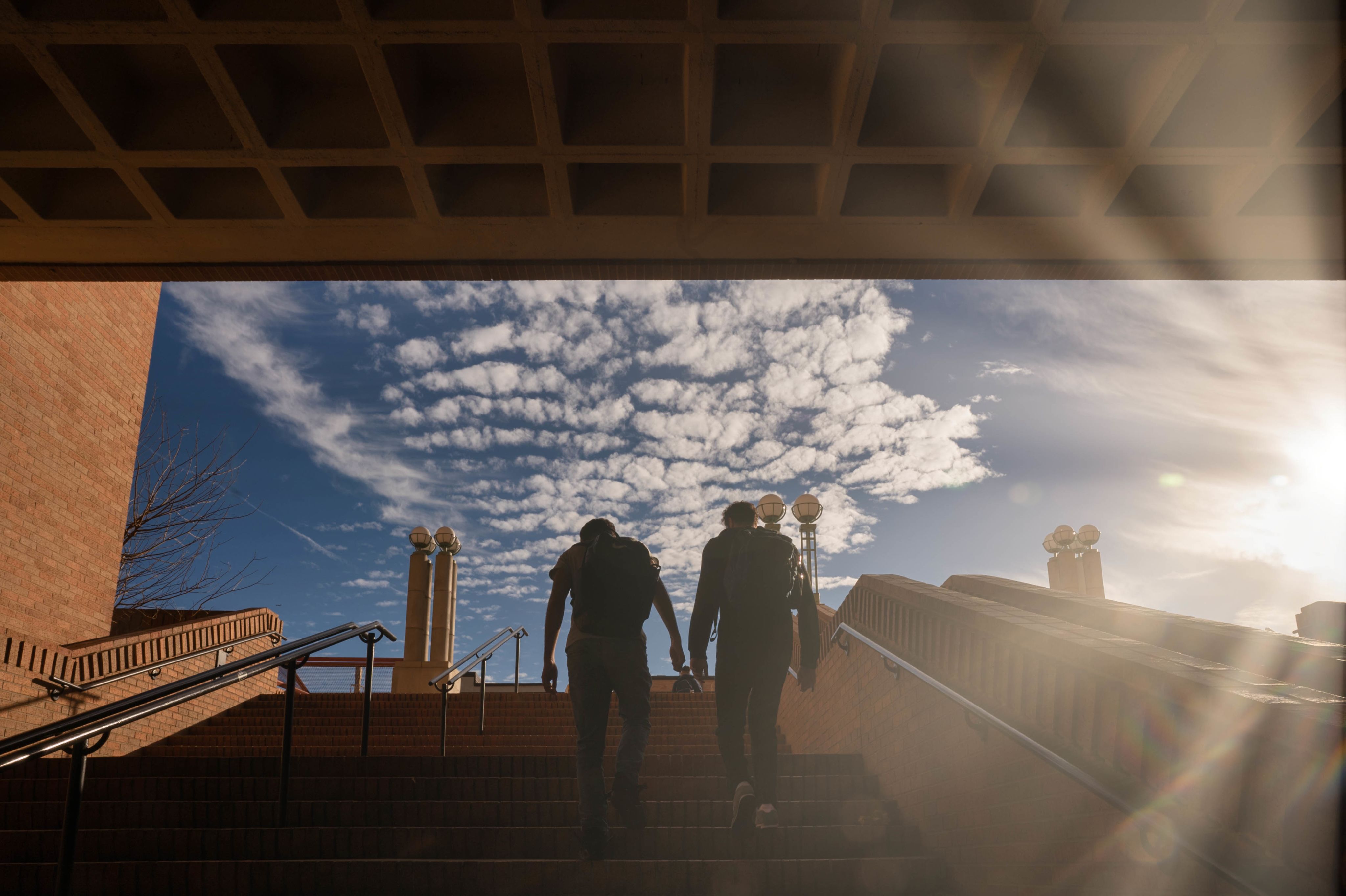
1895
William M. Trimble
William M. Trimble
Lee M. Hammond
Lee M. Hammond
L.M. Hammond and W.M. Trimble receive a Warranty Land Deed to establish Arlington College. The school offers classes from first grade through high school in subjects such as Latin, history, algebra, geometry, grammar, reading, literature, government, art, music, elocution, and penmanship. About 75 students attend during its first year.
1902
The first faculty of the Carlisle Military Academy
The first faculty of the Carlisle Military Academy
Arlington College closes and Carlisle Military Academy opens in its place. The school accepts students ages 10 to 18, and the initial enrollment is four. Tuition for the year was $245 (later raised to $300), plus an additional $30.05 for the uniform.
1904
Carlisle Military Academy adds teams for baseball and football, with track (1907) and basketball (1908) following over the next few years.
1913
Track team from Arlington Military Academy
Track team from Arlington Military Academy
Carlisle Military Academy graduates its last four students before closing. Arlington Training School opens on the campus soon after with an initial enrollment of 32 students. Over the next three years, the school adds a school newspaper, The Reveille; literary societies; forensic clubs; drama groups; and tennis teams for both women and men.
1916
John B. Dodson of Arlington Military Academy
John B. Dodson of Arlington Military Academy
Arlington Training Academy closes due to financial and legal issues. John B. Dodson, former superintendent of schools in McKinney and Oak Cliff and president of Oak Cliff College, makes a last attempt to offer a private primary or military school on the site with Arlington Military Academy. It is open only one year.
Group of male and female students at Grubbs Vocational College
Group of male and female students at Grubbs Vocational College
Cooking laboratory, Grubbs Vocational College, early 1920s
Cooking laboratory, Grubbs Vocational College, early 1920s
1917
After years of lobbying by Arlington leaders, officials, and community members, the 35th Texas Legislature creates a new junior college—Grubbs Vocational College—on the site as a branch campus of what is now called Texas A&M University. Enrollment is 66 in the first year, 192 in the second, and 808 by the 1922-23 school year.
1919
A new fireproof administration building (now Ransom Hall) opens. It features an auditorium “equipped with a moving picture machine and stereopticon for illustrating various kinds of manufacturing processes.”
Grubbs Vocational College, Ransom Hall construction
Grubbs Vocational College, Ransom Hall construction
Students begin publishing The Shorthorn as a monthly magazine.
Grubbs Vocational College Shorthorn staff
Grubbs Vocational College Shorthorn staff
In 1921, a Reserve Officers Training Corps (ROTC) starts on campus.
Lieutenant L. W. Caine Jr., Grubbs Vocational College, Arlington, Texas
Lieutenant L. W. Caine Jr., Grubbs Vocational College, Arlington, Texas
1923
Grubbs Vocational College changes its name to North Texas Junior Agricultural College (NTAC)—the idea is that removing “vocational” will help the school shed its image as a private institution.
Aerial of North Texas Agricultural College
Aerial of North Texas Agricultural College
The NTAC is innovative in how it delivers courses, offering broader summer school options, holding classes at night, and directly recruiting older and married students.
North Texas Agricultural College student dance
North Texas Agricultural College student dance
1928
The new Science Building (now Preston Hall) as well as the Livestock and Husbandry Building (now the Roundhouse) open.
Junior Aggie Girls Rifle Class
Junior Aggie Girls Rifle Class
Preston Hall and Roundhouse of North Texas Agricultural College
Preston Hall and Roundhouse of North Texas Agricultural College
1943
North Texas Agricultural College war effort
North Texas Agricultural College war effort
During World War II, NTAC adapts many of its classes to better aid in the war effort. This includes opening engineering courses to women for the first time.
1949
North Texas Agricultural College changes its name to Arlington State College (ASC). Supporters believe having “agricultural” in the old name was limiting the school’s appeal, especially since agriculture is no longer the main area of study available.
1956
The ASC football team wins the Junior Rose Bowl by defeating Compton 20-13 in Pasadena, Calif.
1959
Gov. Price Daniel signs legislation giving ASC four-year status. Enrollment grows to 6,388 that fall. Diplomas are awarded for the first time in 1961 to a four-year graduating class of 104.
1962
ASC becomes first school in the Texas A&M System to integrate. Its athletics teams follow in 1963 when the college joins the Southland Conference.
1965
Gov. John Connally signs the bill to transfer ASC from the Texas A&M System to The University of Texas System.
1967
The institution assumes its eighth and final name, The University of Texas at Arlington.
1969
Reby Cary, assistant professor of history and dean of student life, becomes the University’s first African American professor. He would later found the Minorities Cultural Center on campus.
1971
The University changes its Rebel theme to the Mavericks. Sam (and later Samantha) Maverick are the new mascots.
1972
UTA’s first five PhD graduates—all in engineering—graduate.
1974
Future Texas Representative Royce West becomes the first black student body president.
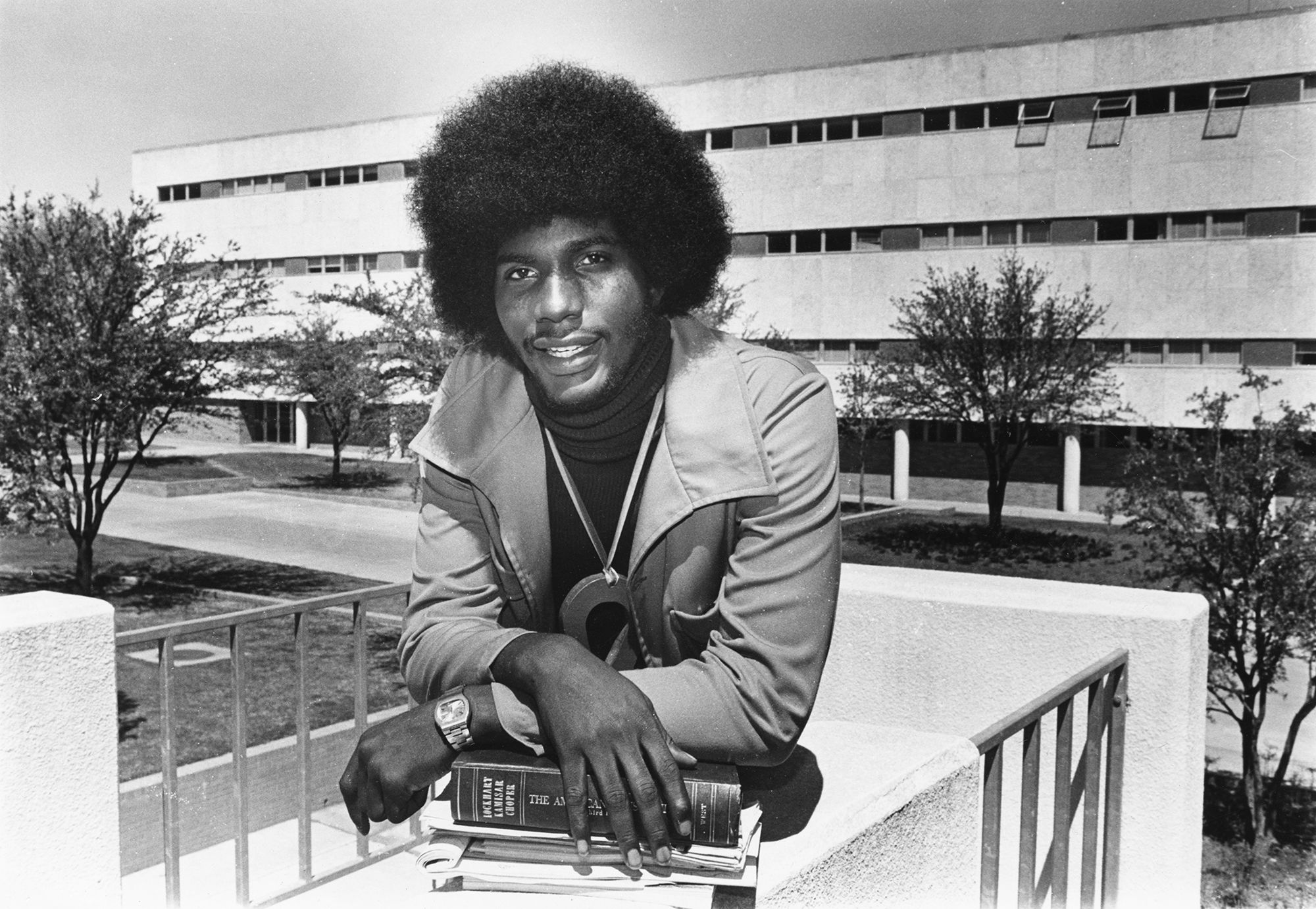
1985
UTA discontinues its football program. While many object, the always quotable Professor Alan Saxe says “If you polled the student body at UTA today, I have a feeling that 70 percent would say they are not heartbroken over dropping football. Ten percent are heartbroken, and the remaining 20 percent did not know UTA even had a team.”
1990
The University opens the first pedestrian walkway over Cooper Street.
1991
The Movin’ Mavs win their first national championship.
2002
University launches an Executive MBA-Asia program in China.
2003
An anonymous donation of $2 million—the largest to that point in UT Arlington history—established the Goolsby Leadership Academy.
UTA also renames its baseball stadium in honor of former player and coach Clay Gould, who died of cancer in 2001.
2004
The Studio Arts Center and Kalpana Chawla Hall open. The latter is named in honor of Kalpana Chawla, an alumna who died in the Space Shuttle Columbia disaster in 2003.
2007
The Fort Worth Center moves into the historic Santa Fe freight building in downtown Fort Worth.
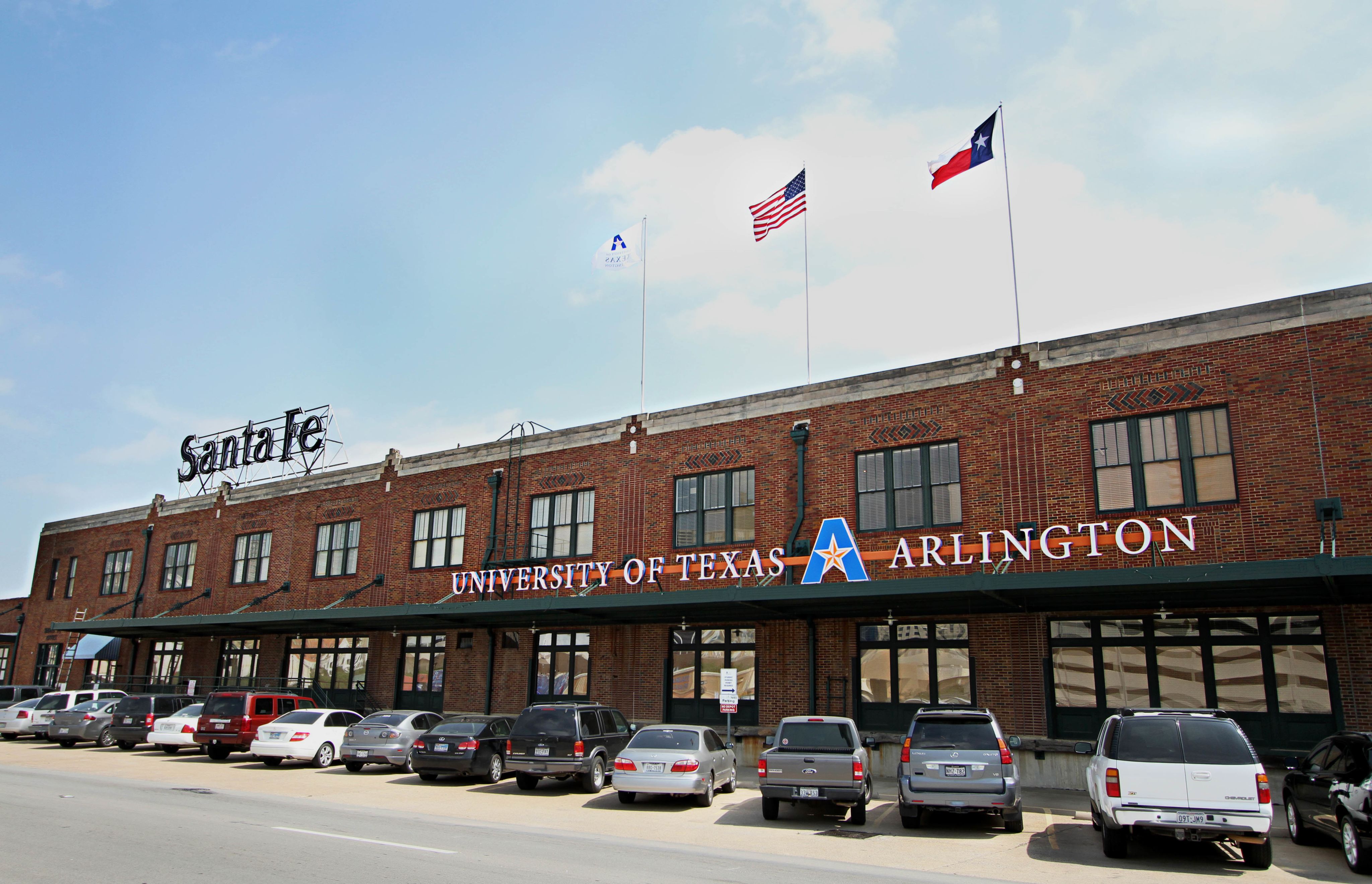
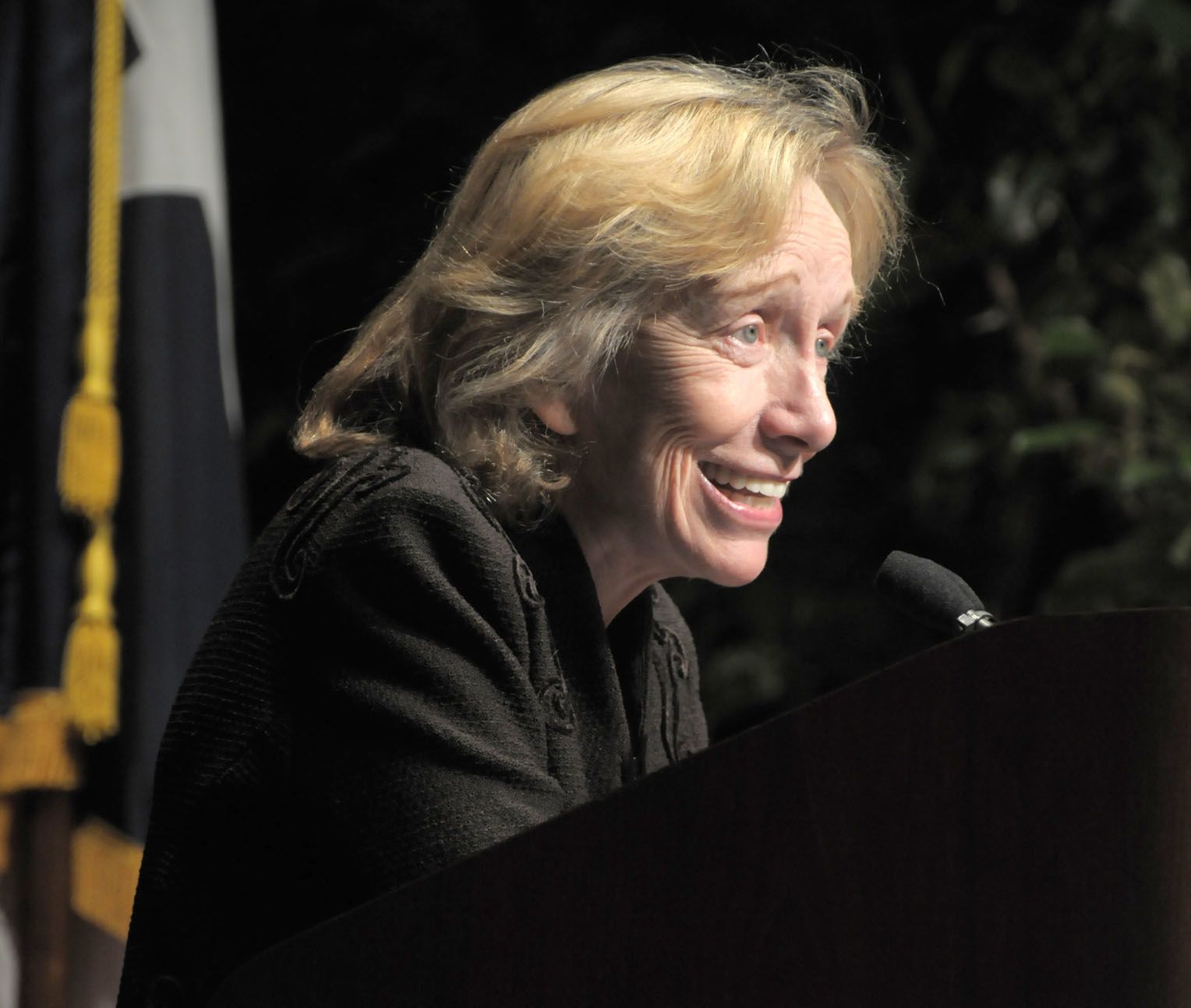
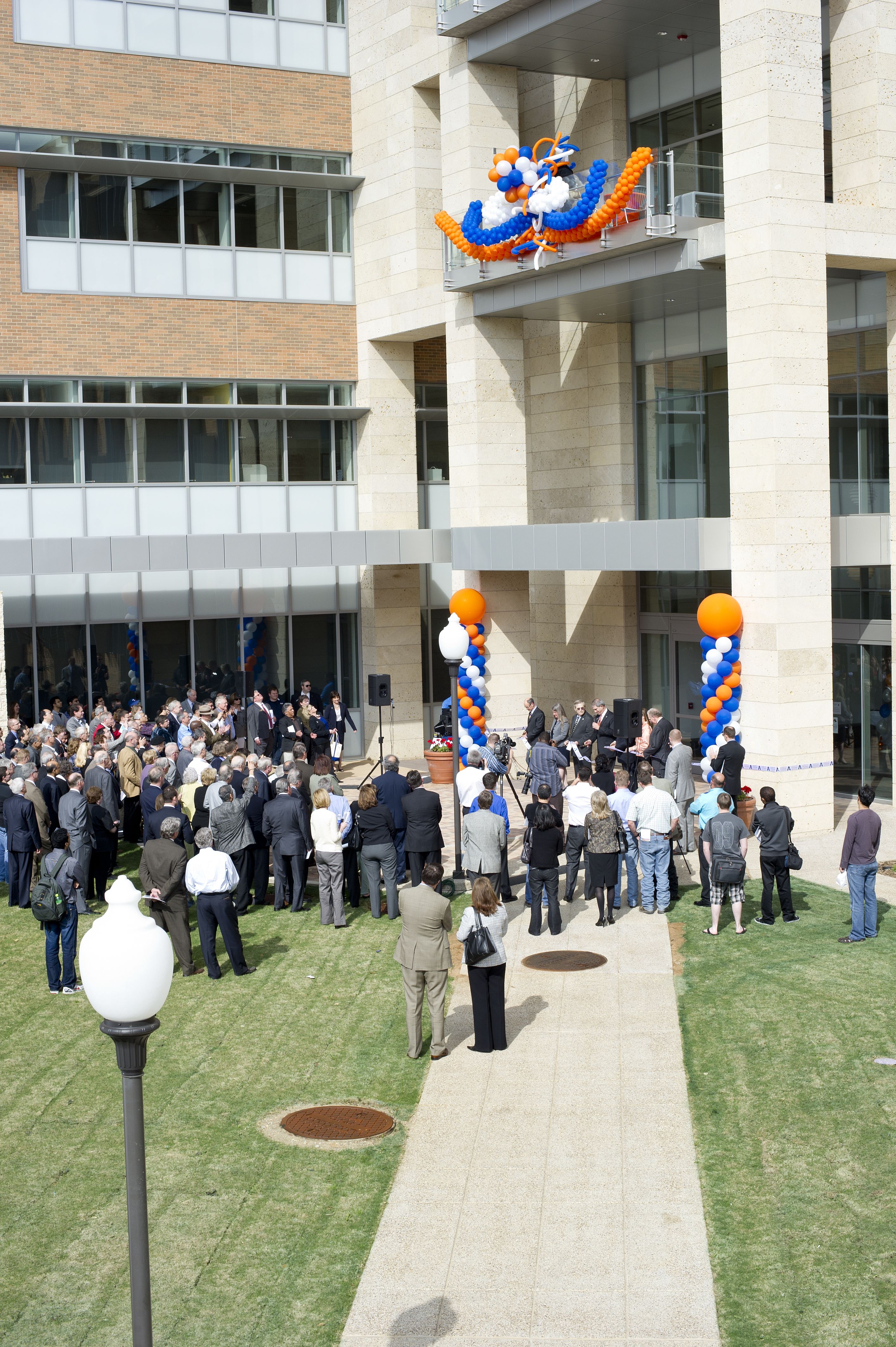
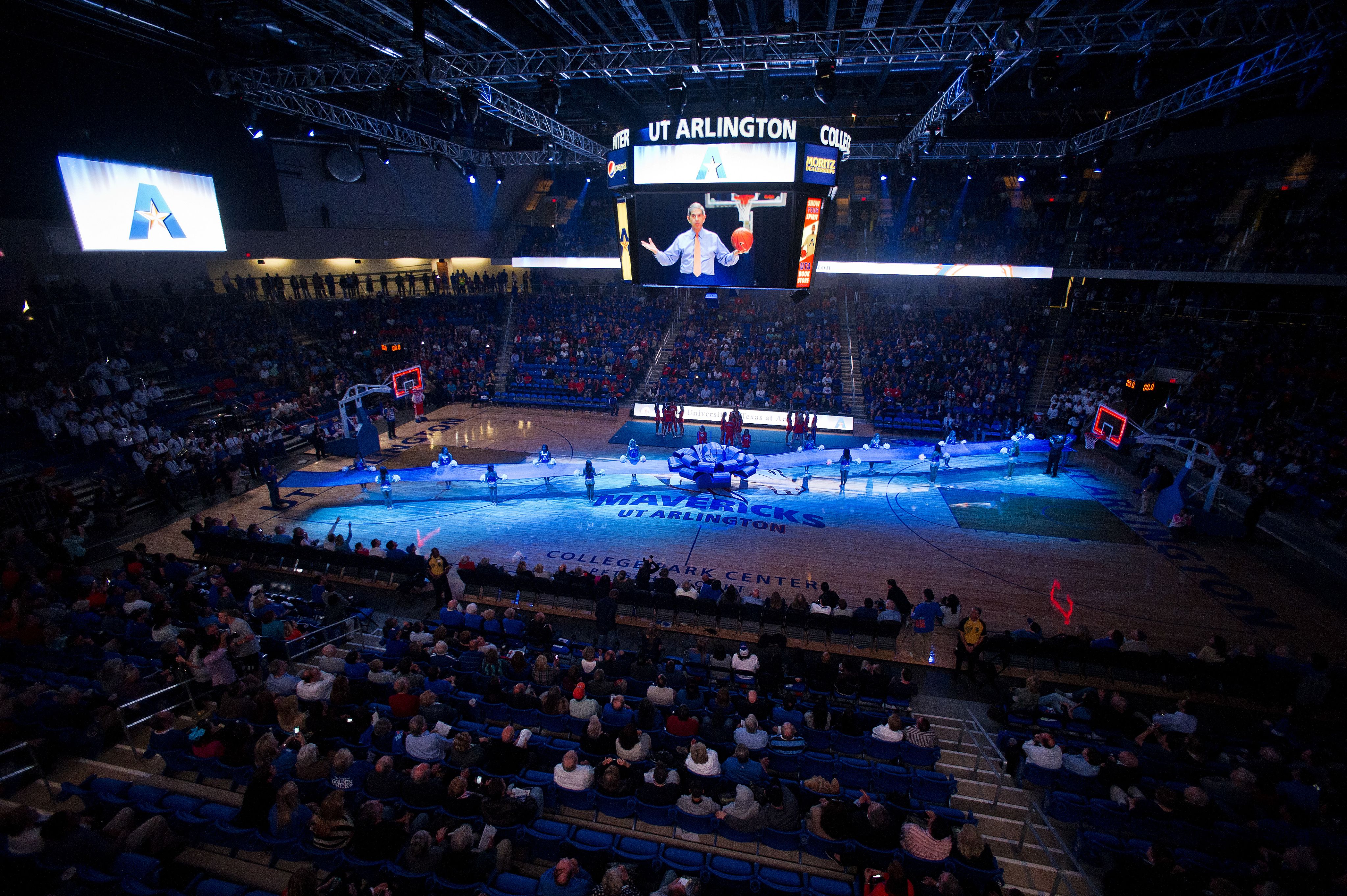
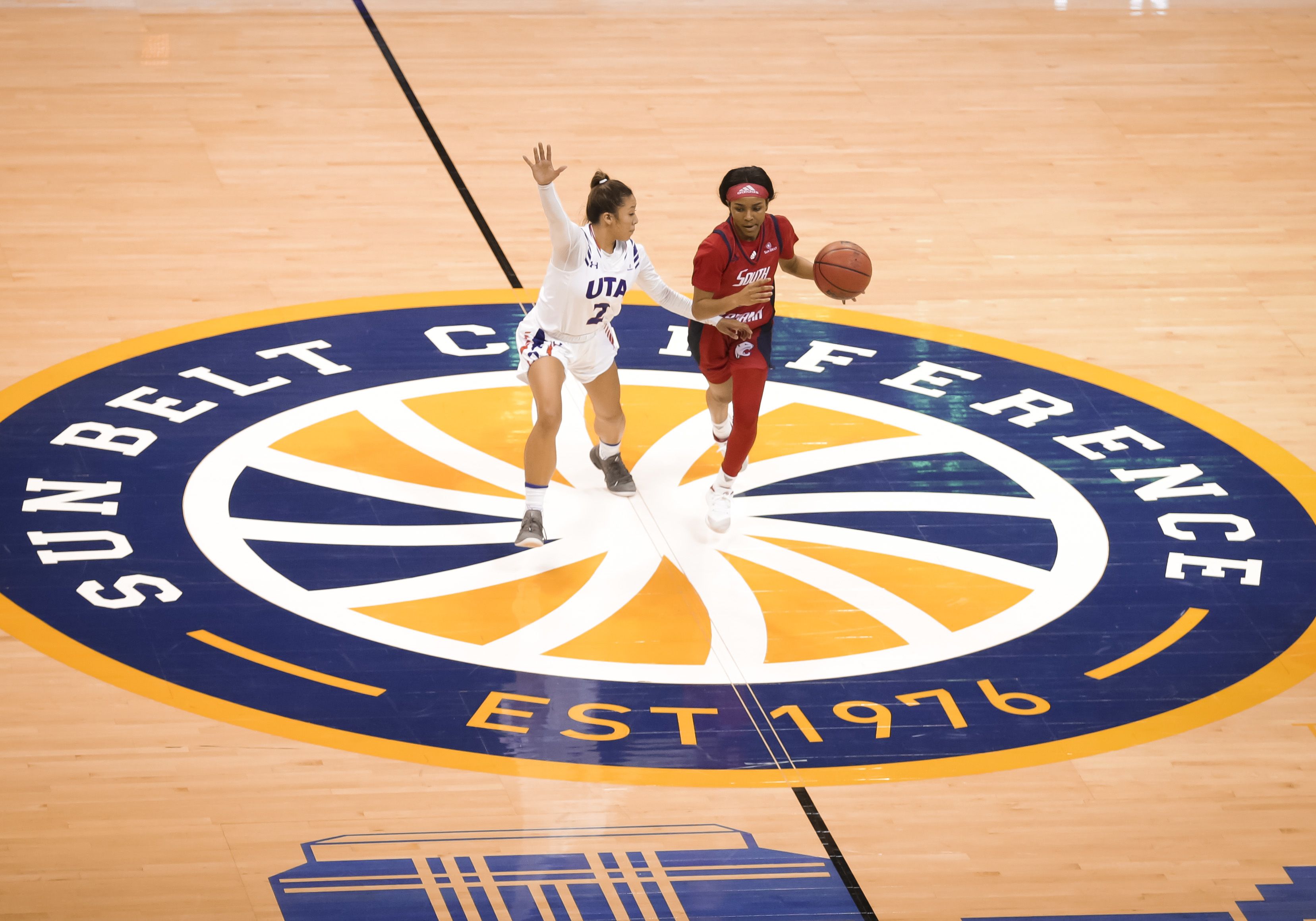
2008
The University launches the Maverick Speakers Series with a lineup that includes sociologist Barbara Ehrenreich, journalist Thomas Friedman, and historian Doris Kearns Goodwin.
2011
The Engineering Research Building opens.
UT Arlington becomes a tobacco-free campus.
2012
College Park Center opens with a basketball double-header featuring both the men’s and women’s teams. The Green at College Park and the larger College Park District open later the same year.
The Automation and Robotics Research Institute changes its name to the UTA Research Institute and appoints General (Ret.) Rick Lynch as executive director.
2013
The Athletics Department joins the Sun Belt Conference, and the Adaptive Sports Program adds the Lady Movin’ Mavs team.
2014
UTA becomes largest public four-year university in Texas to be labeled a Hispanic-Serving Institution by the U.S. Department of Education.
The Department of Kinesiology moves from the College of Education and Health Professions (now College of Education) to the newly renamed College of Nursing and Health Innovation. A year later, the University further reorganizes by combining the School of Architecture and the School of Urban and Public Affairs to form the College of Architecture, Planning, and Public Affairs.
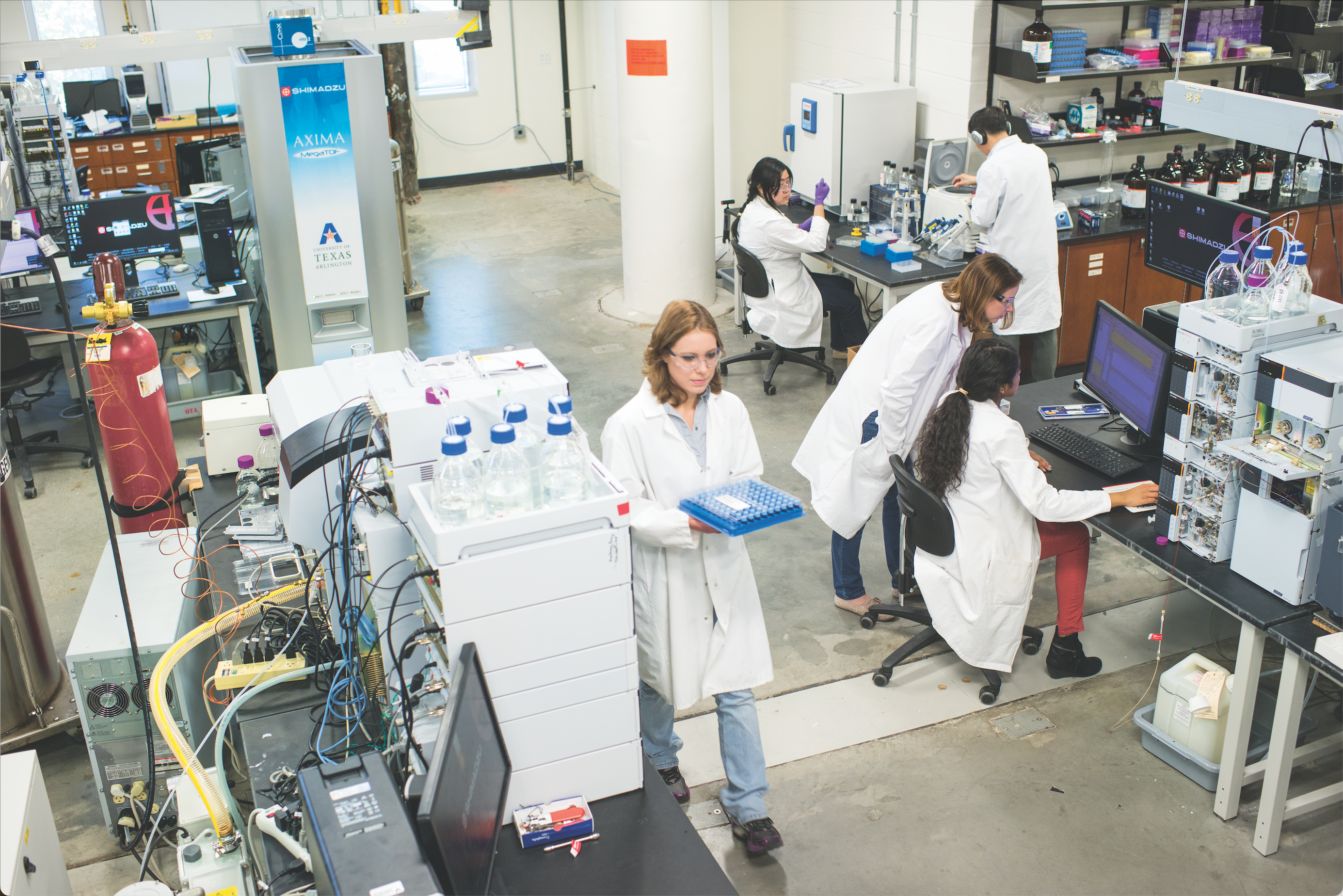
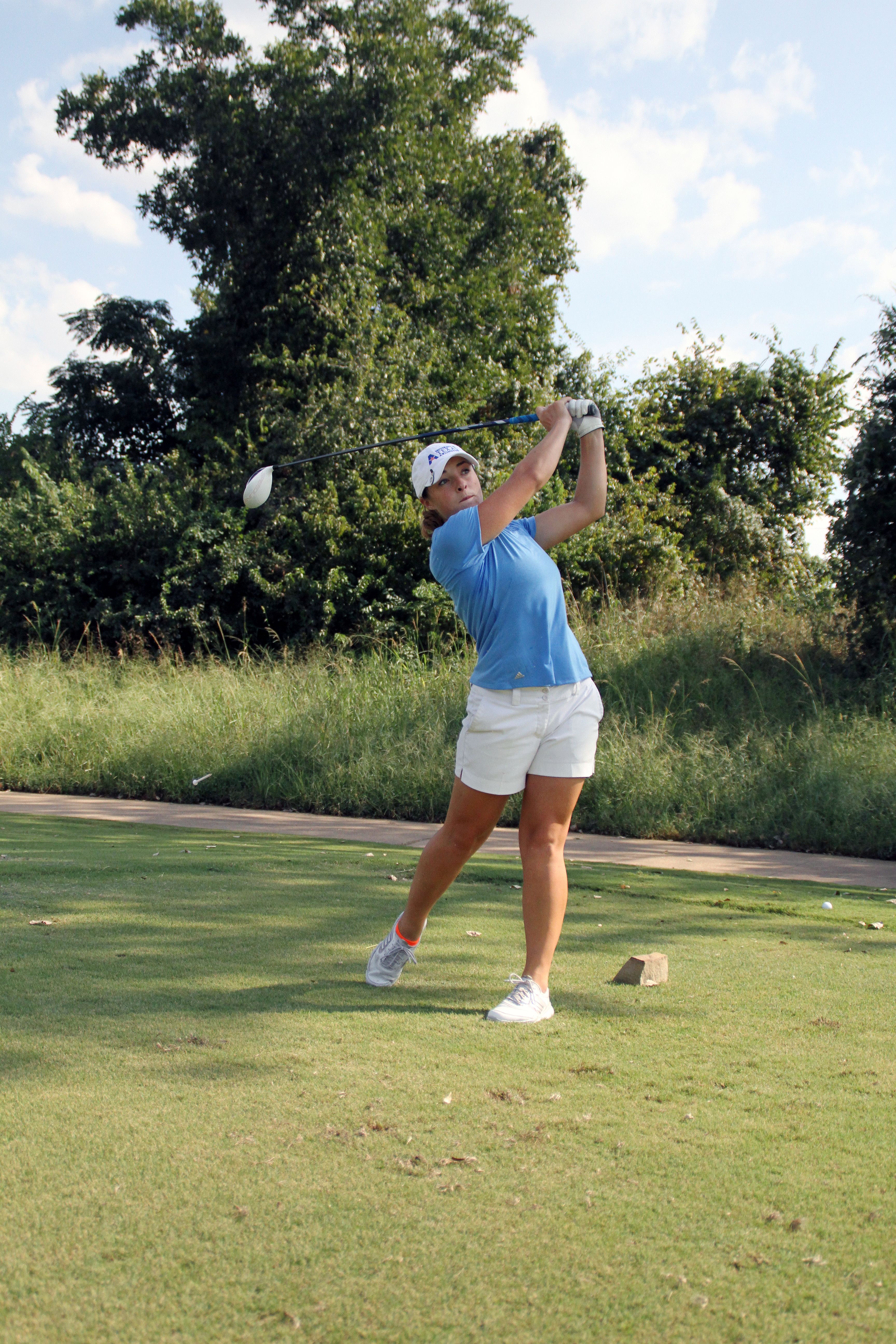
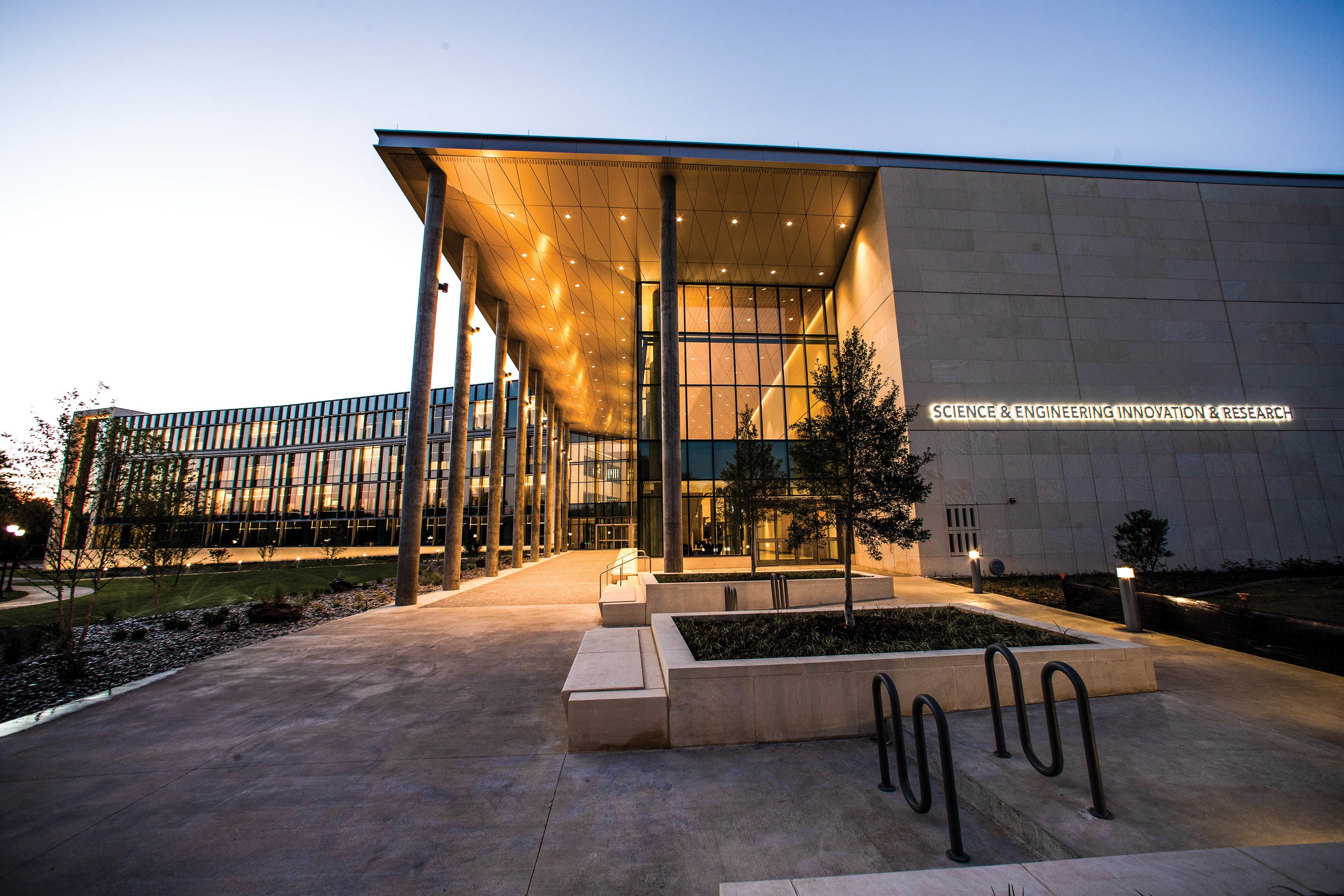
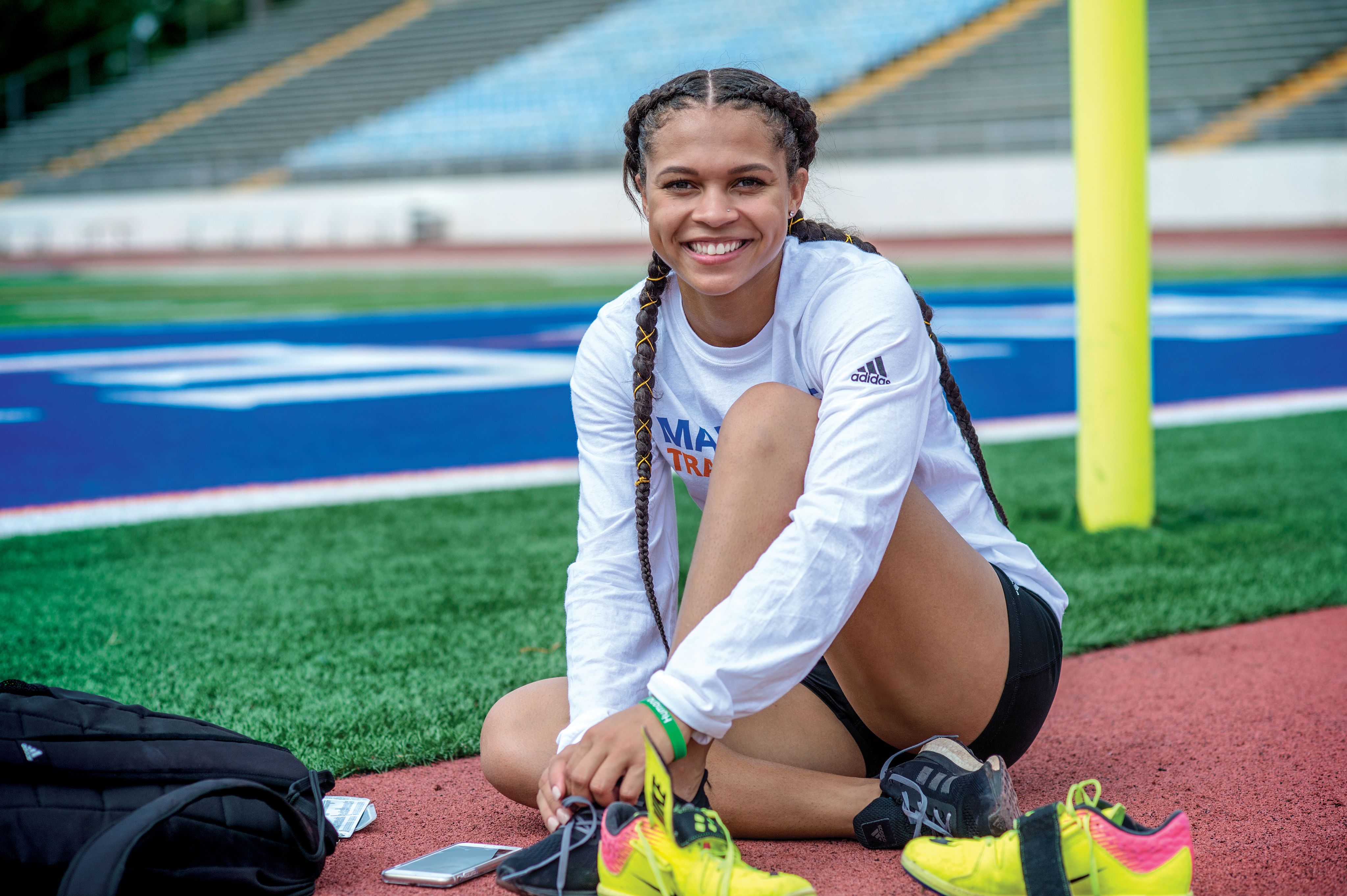
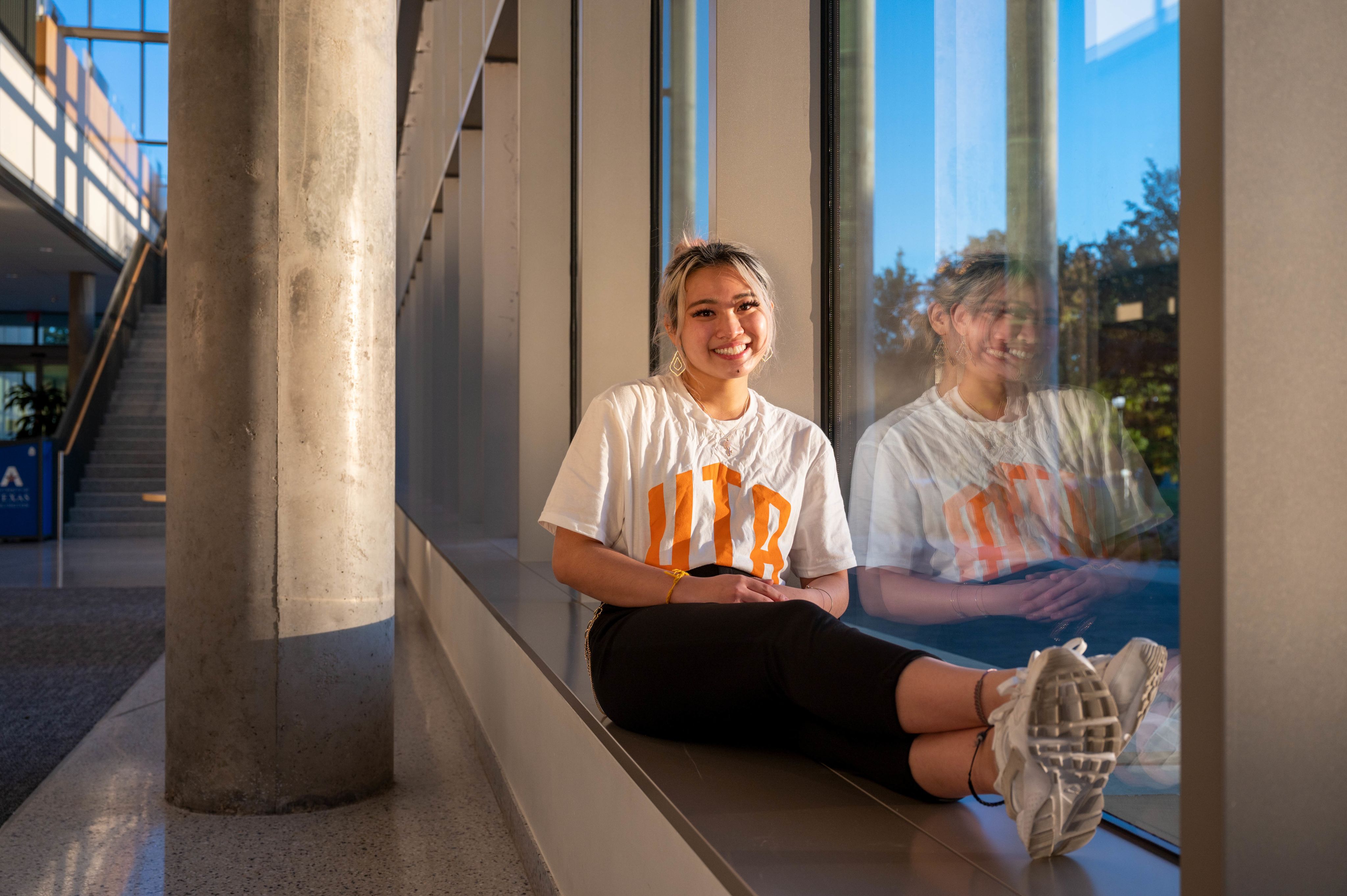
2016
UTA receives the R-1 “Very High Research Activity” classification from the Carnegie Classification of Institutions of Higher Education for the first time.
2016
The Athletics Department adds a women’s golf program.
2018
Research expenditures top $100 million for the first time. The Science & Engineering Innovation & Research building, West Hall, and The Commons officially open.
2018
Alexus Henry becomes the first UTA woman to win an individual national championship (high jump).
2021
The University receives Asian American Native American Pacific Islander-Serving Institution designation from U.S. Department of Education.
2022
Jennifer Cowley becomes first woman president and 10th overall.
The Movin’ Mavs win their second consecutive national title at the National Intercollegiate Wheelchair Basketball Tournament.
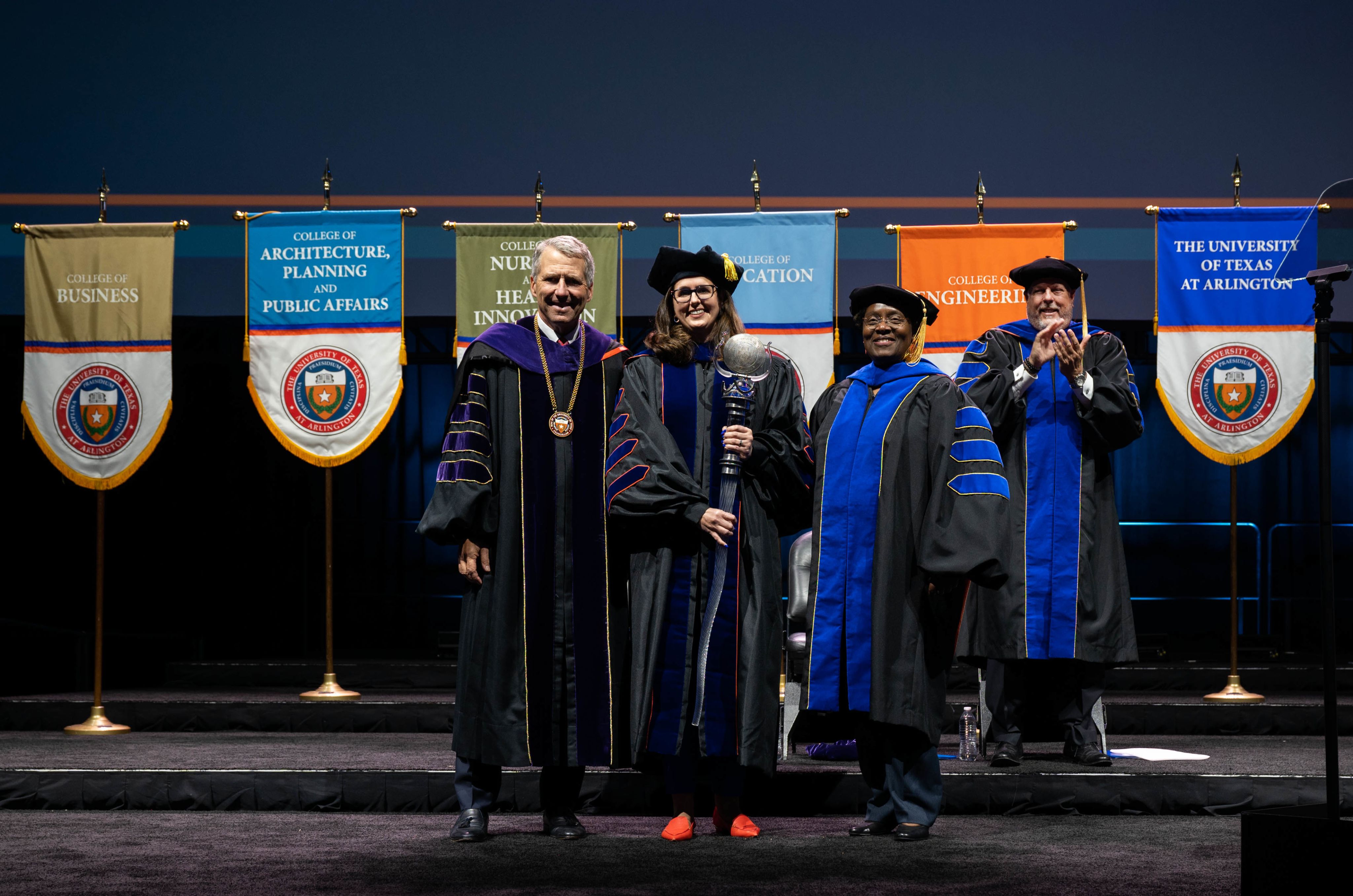
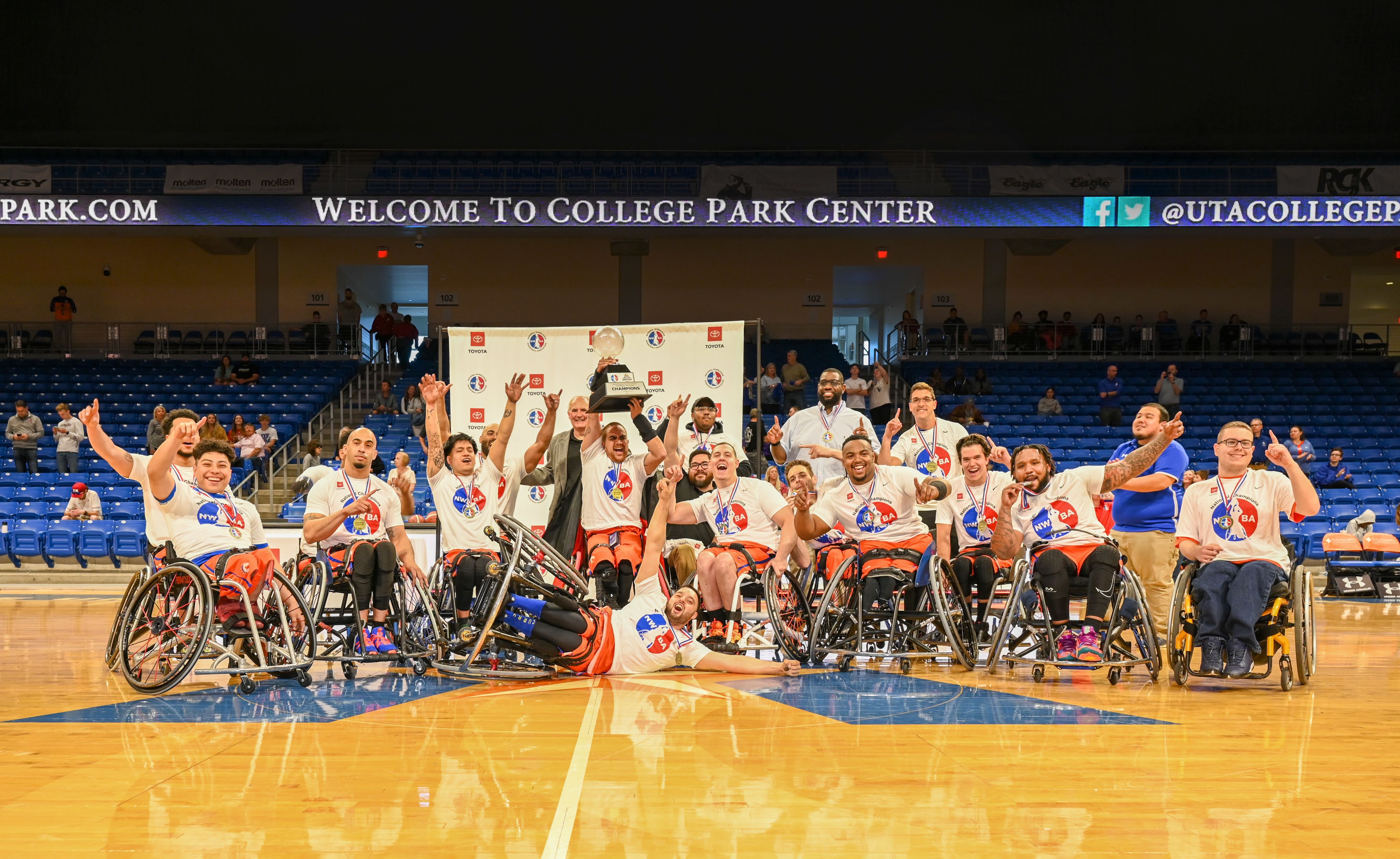
2024
UTA announces plans for a new satellite campus in Parker County, UTA West.
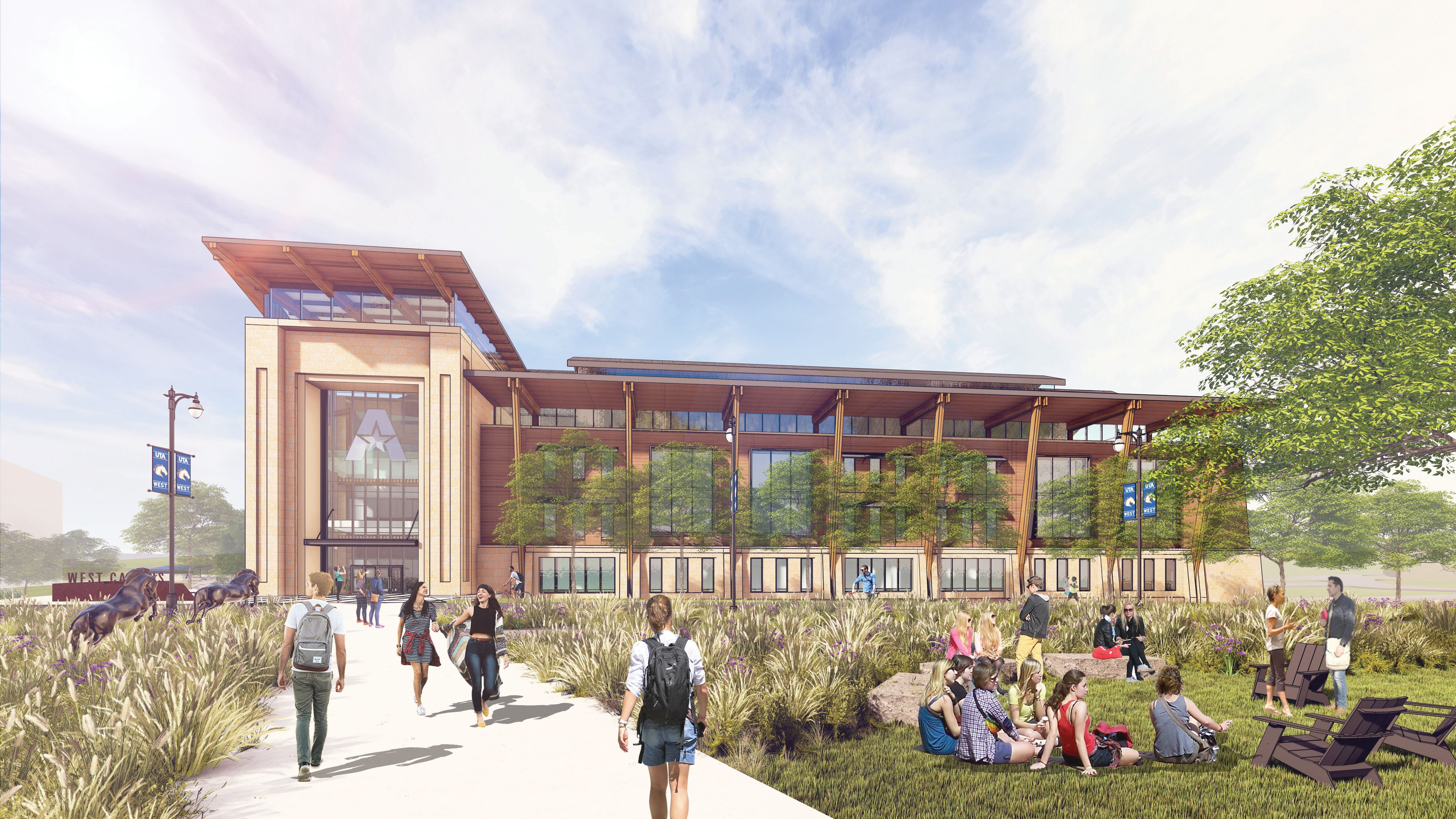
2025
UTA celebrates 130 years of
excellence in academics,
globally-impactful research, and
strong community-building service!
